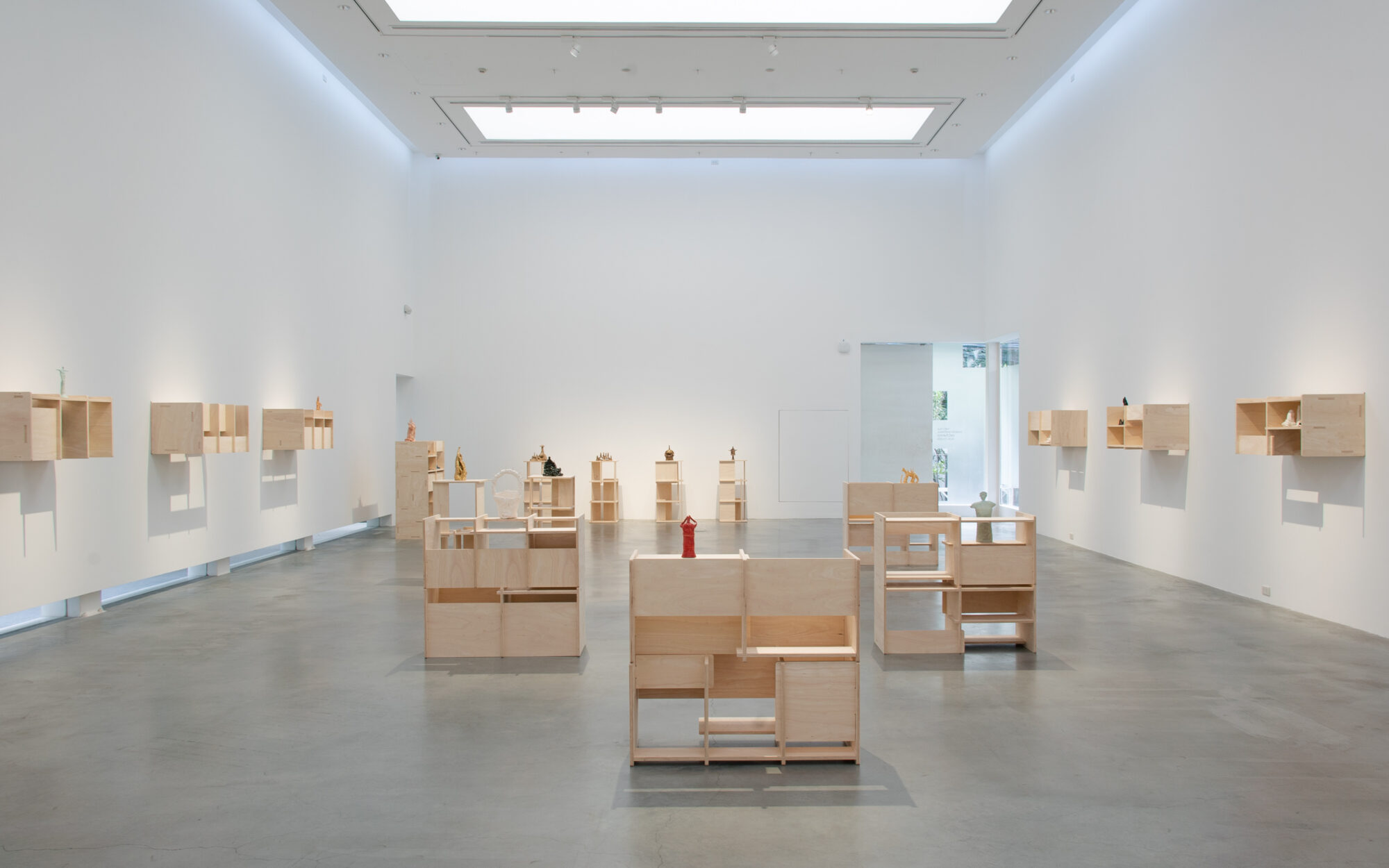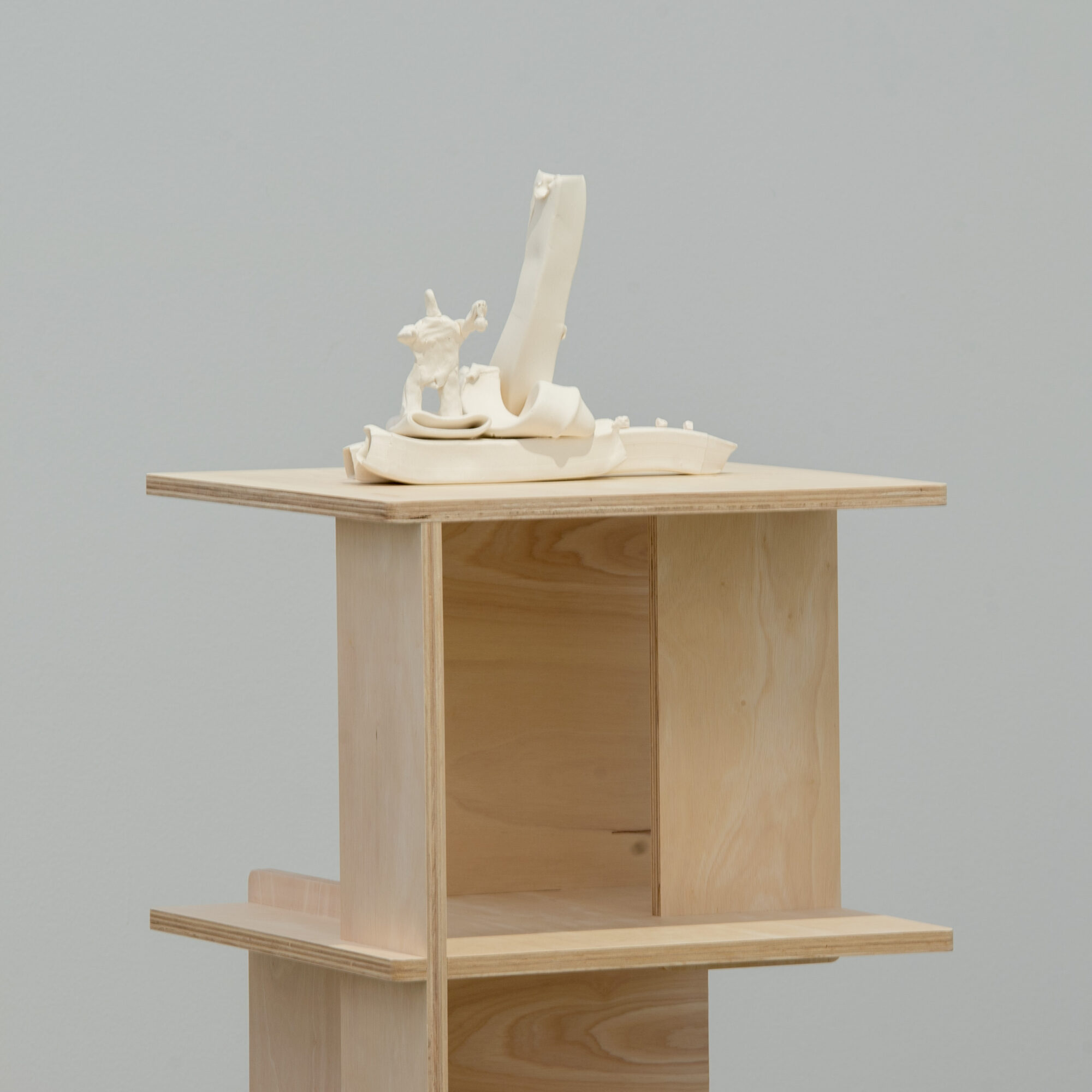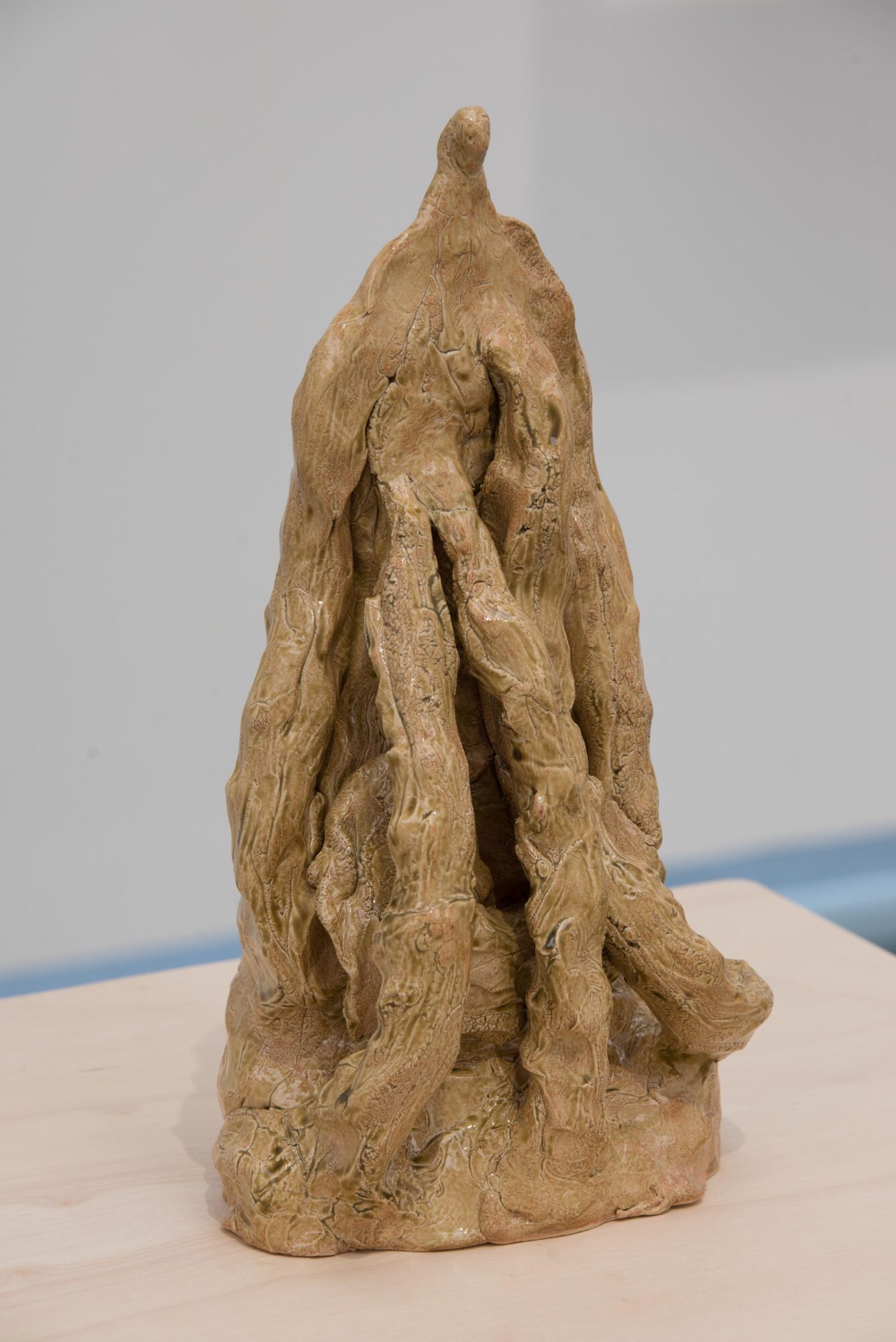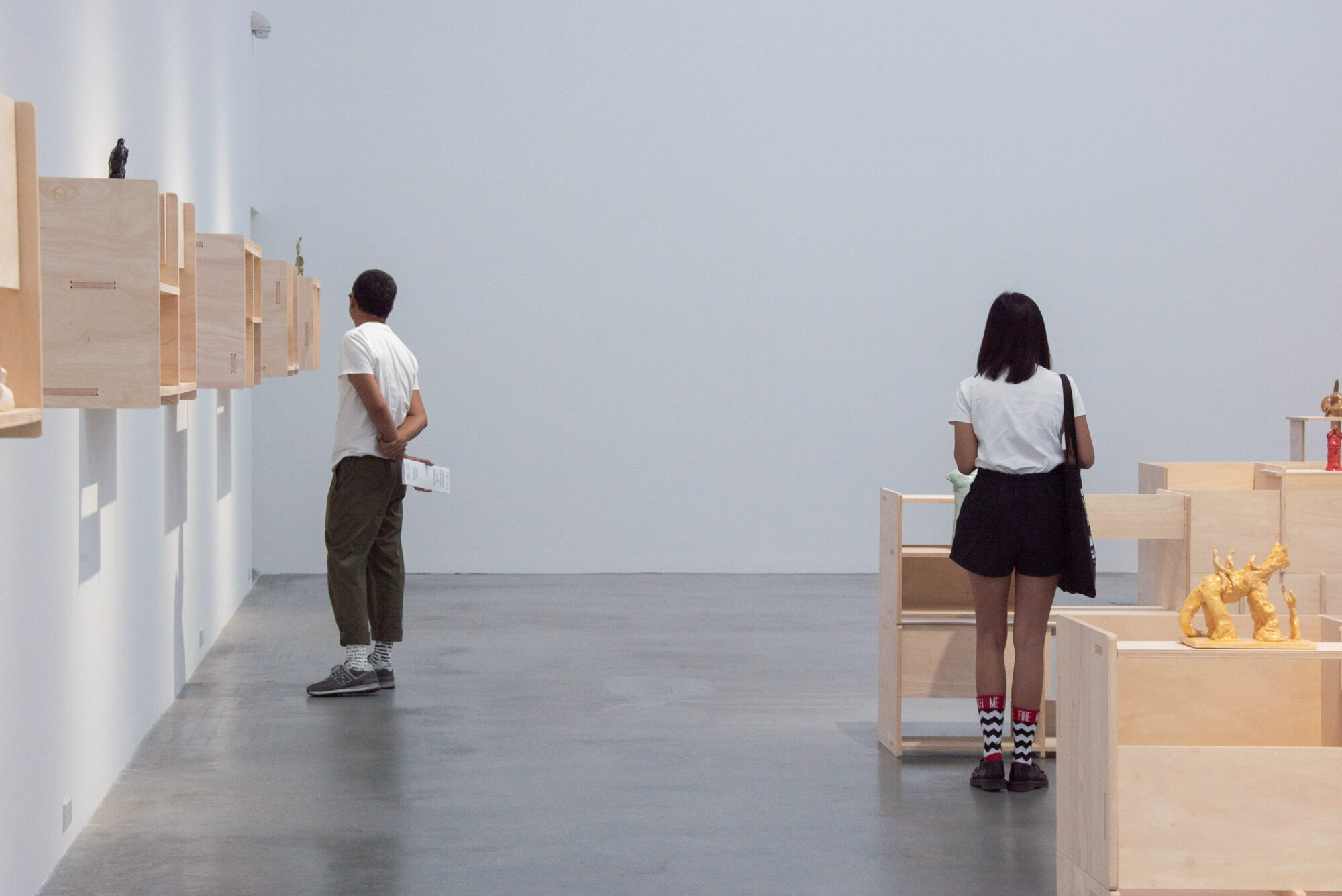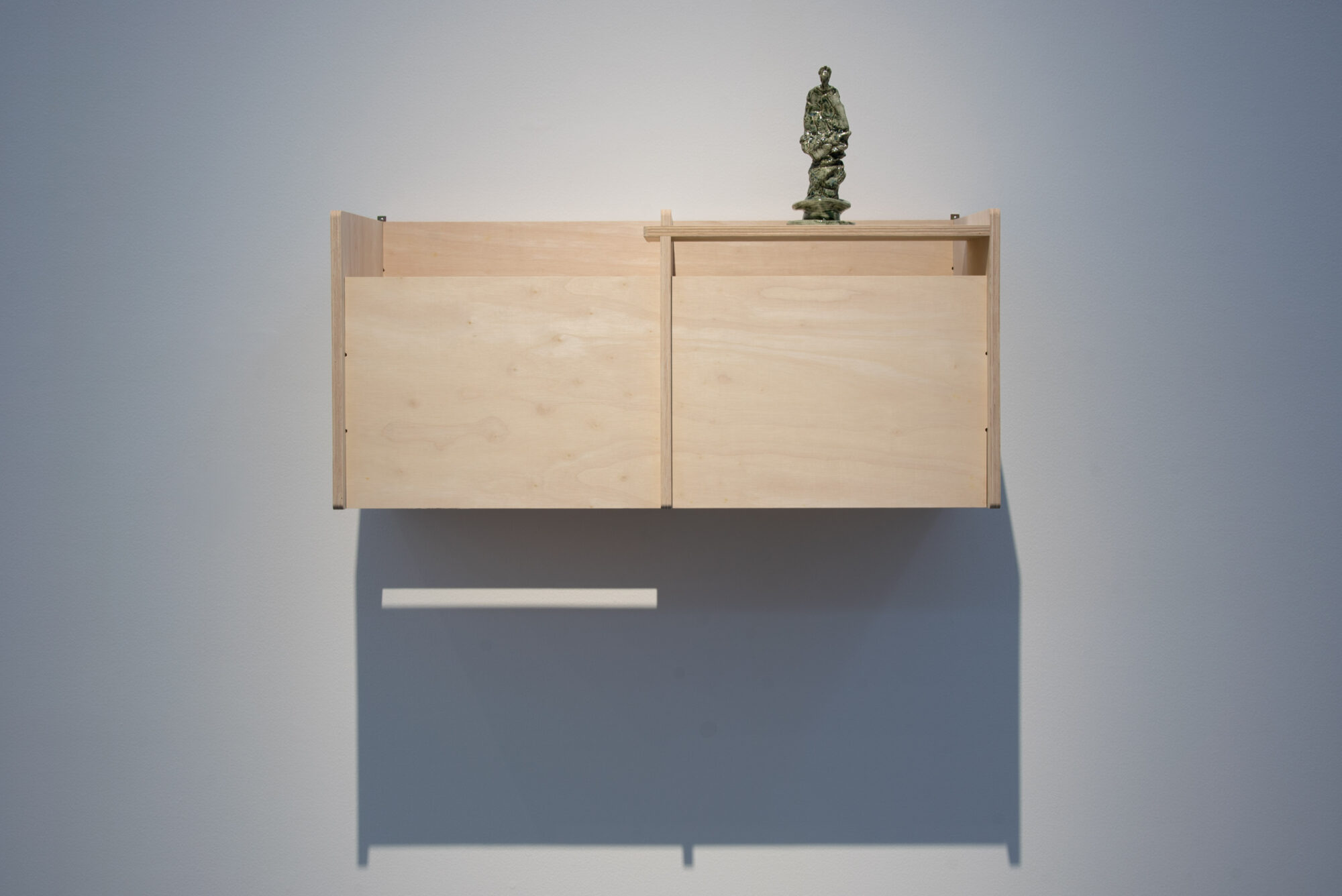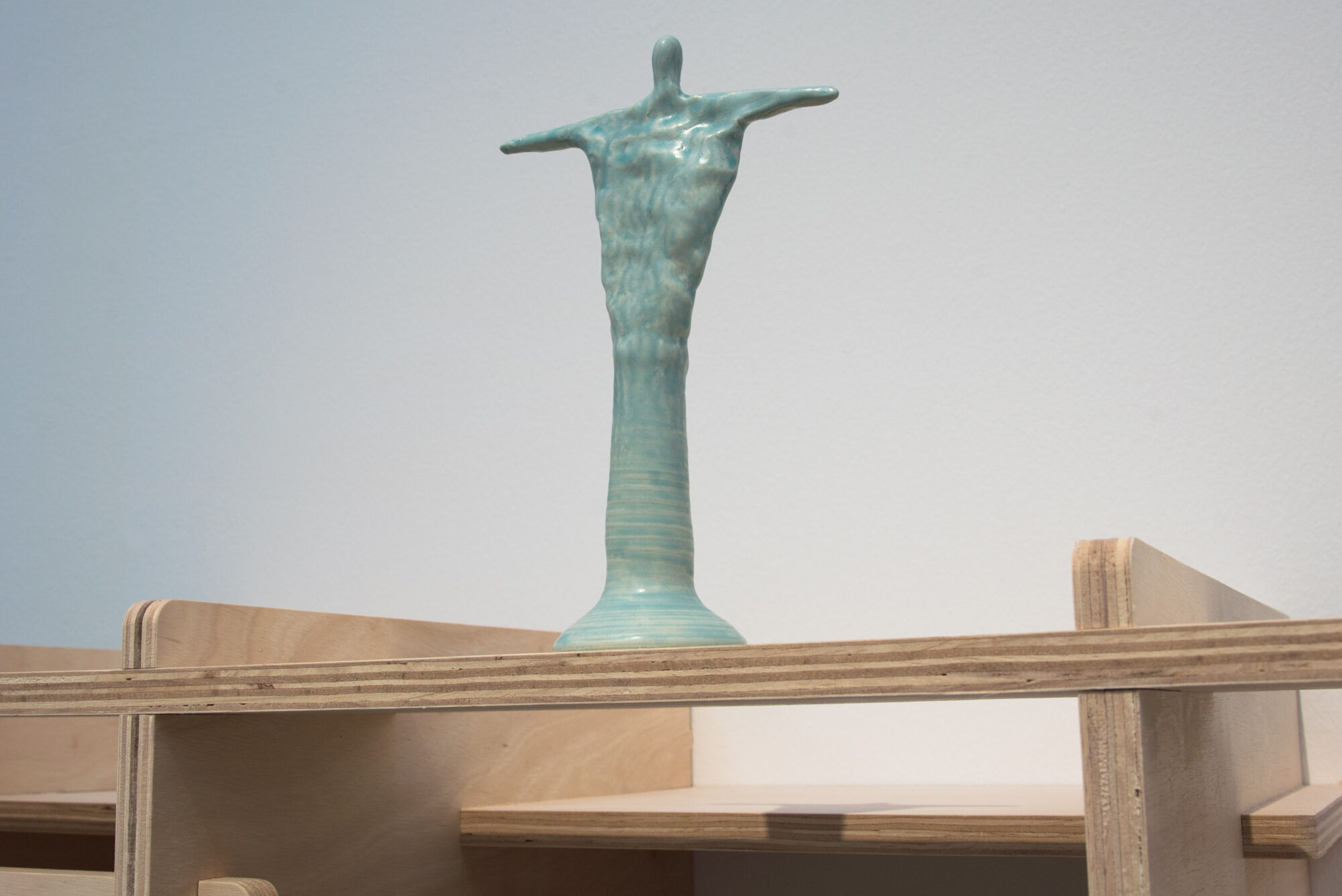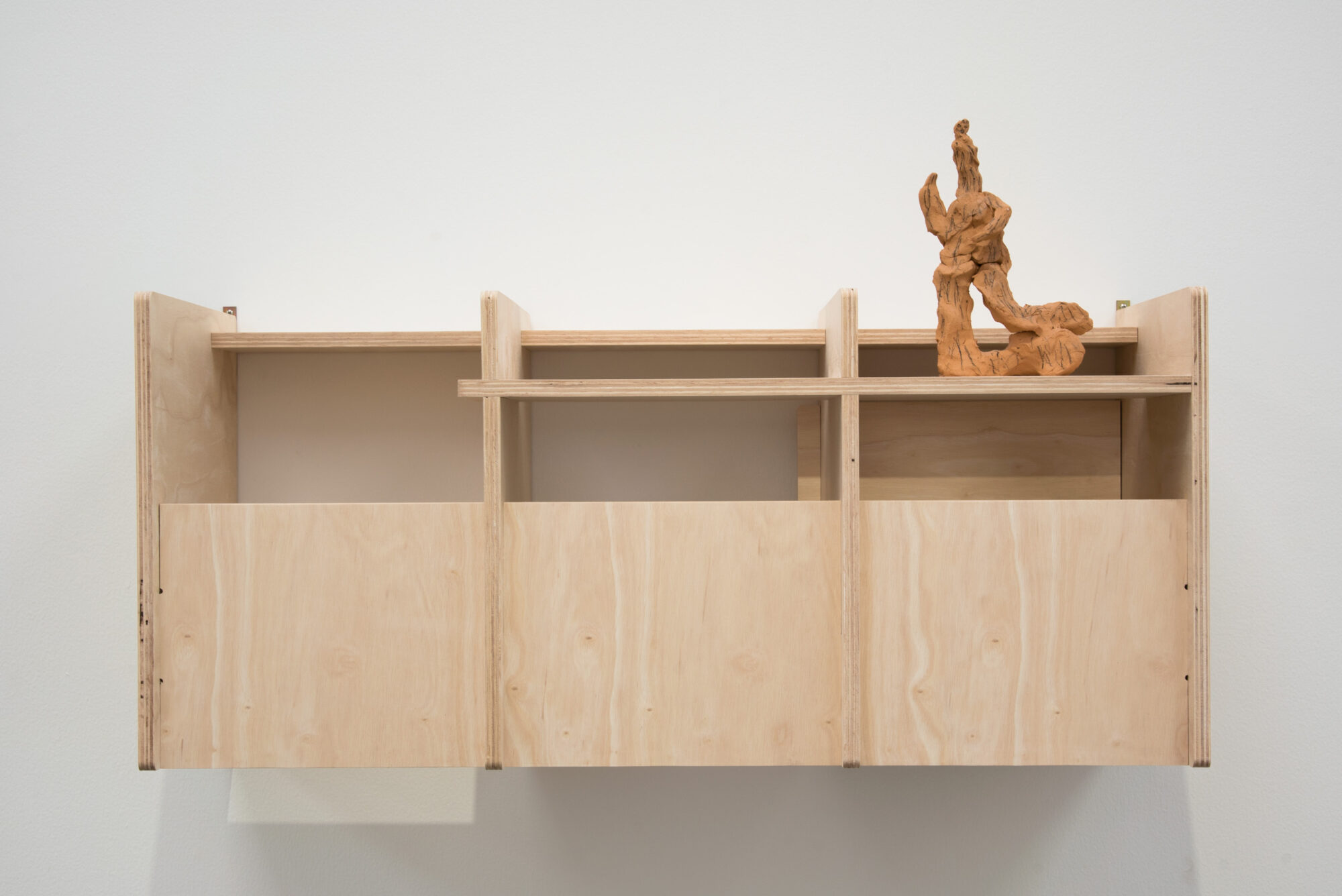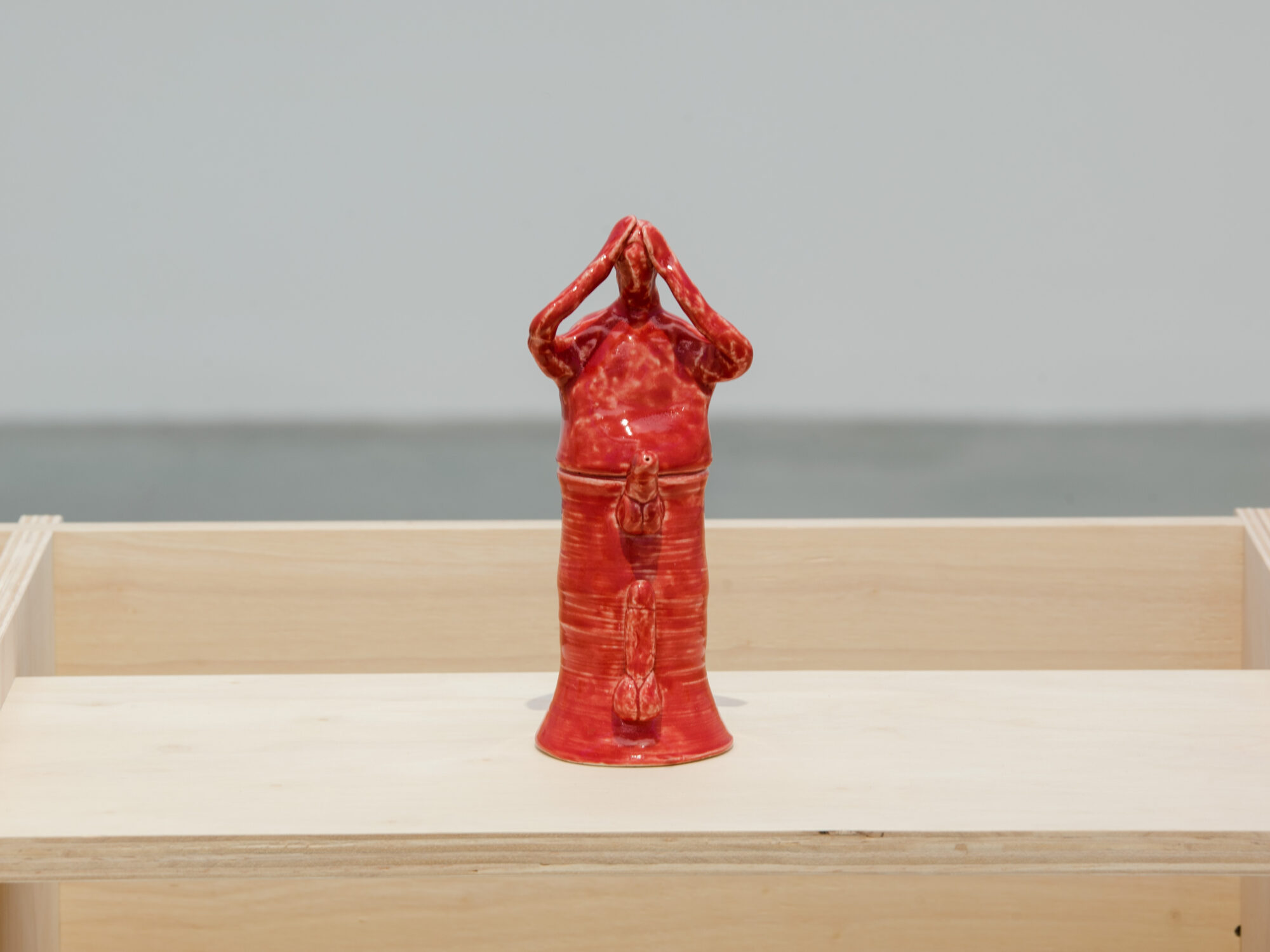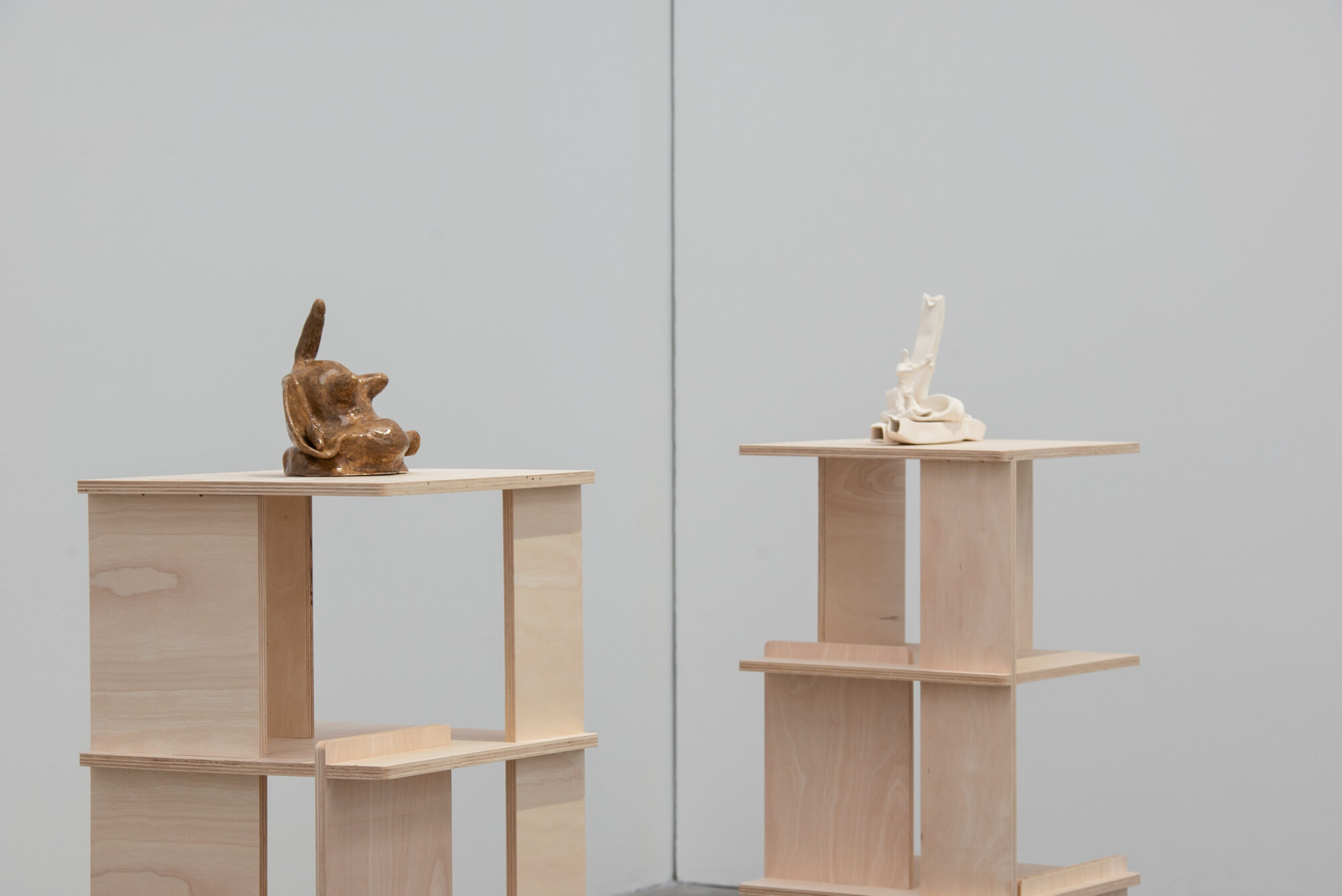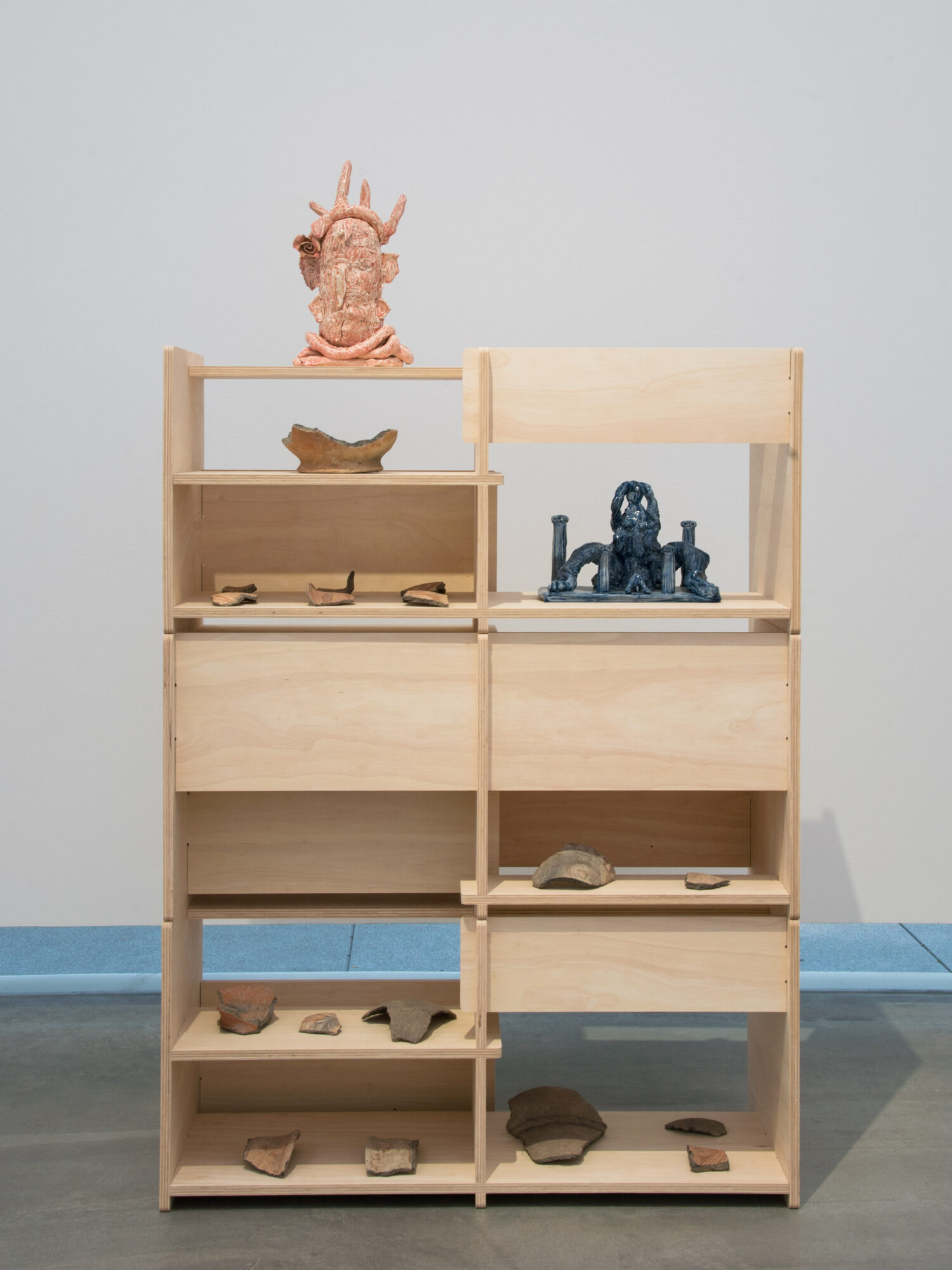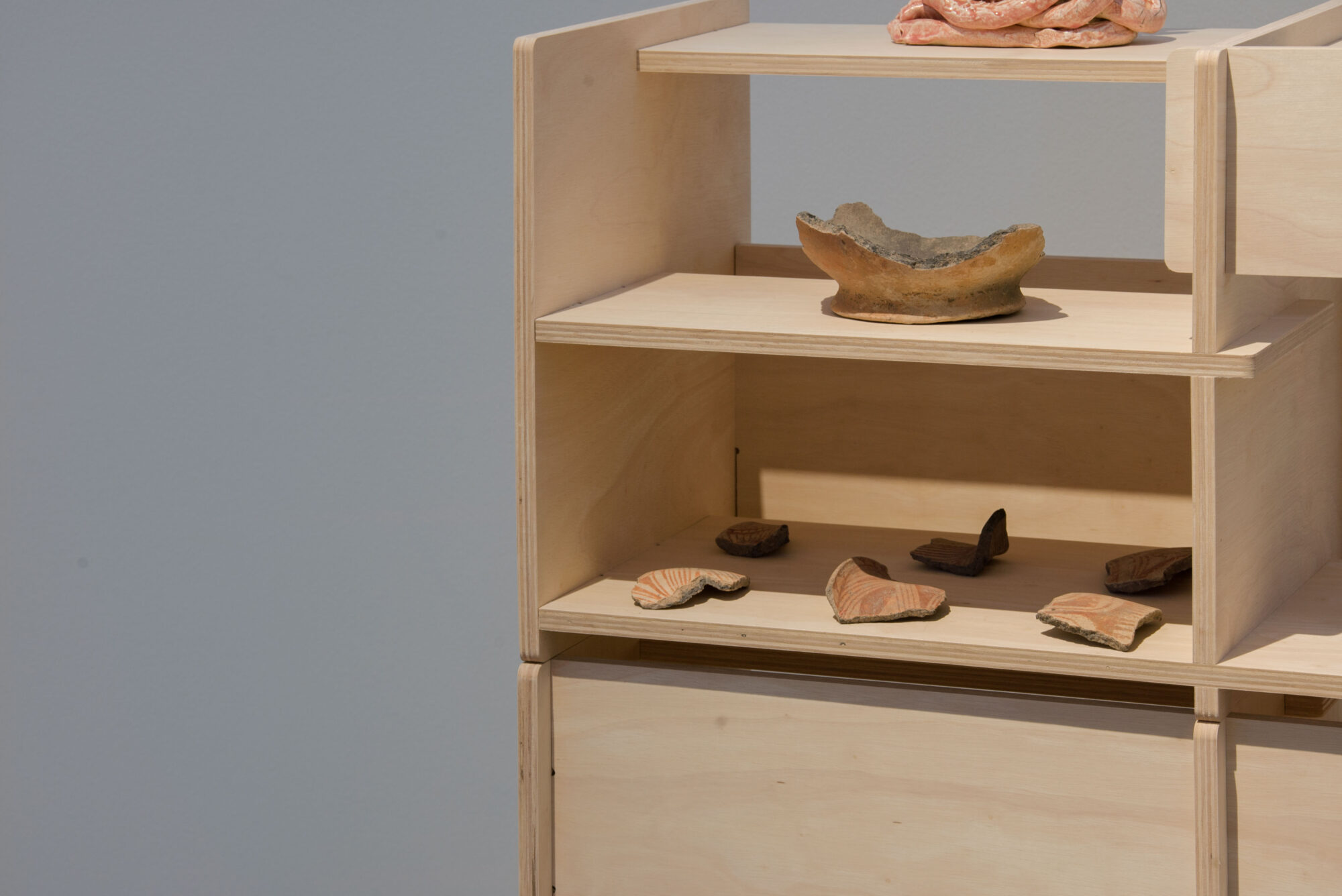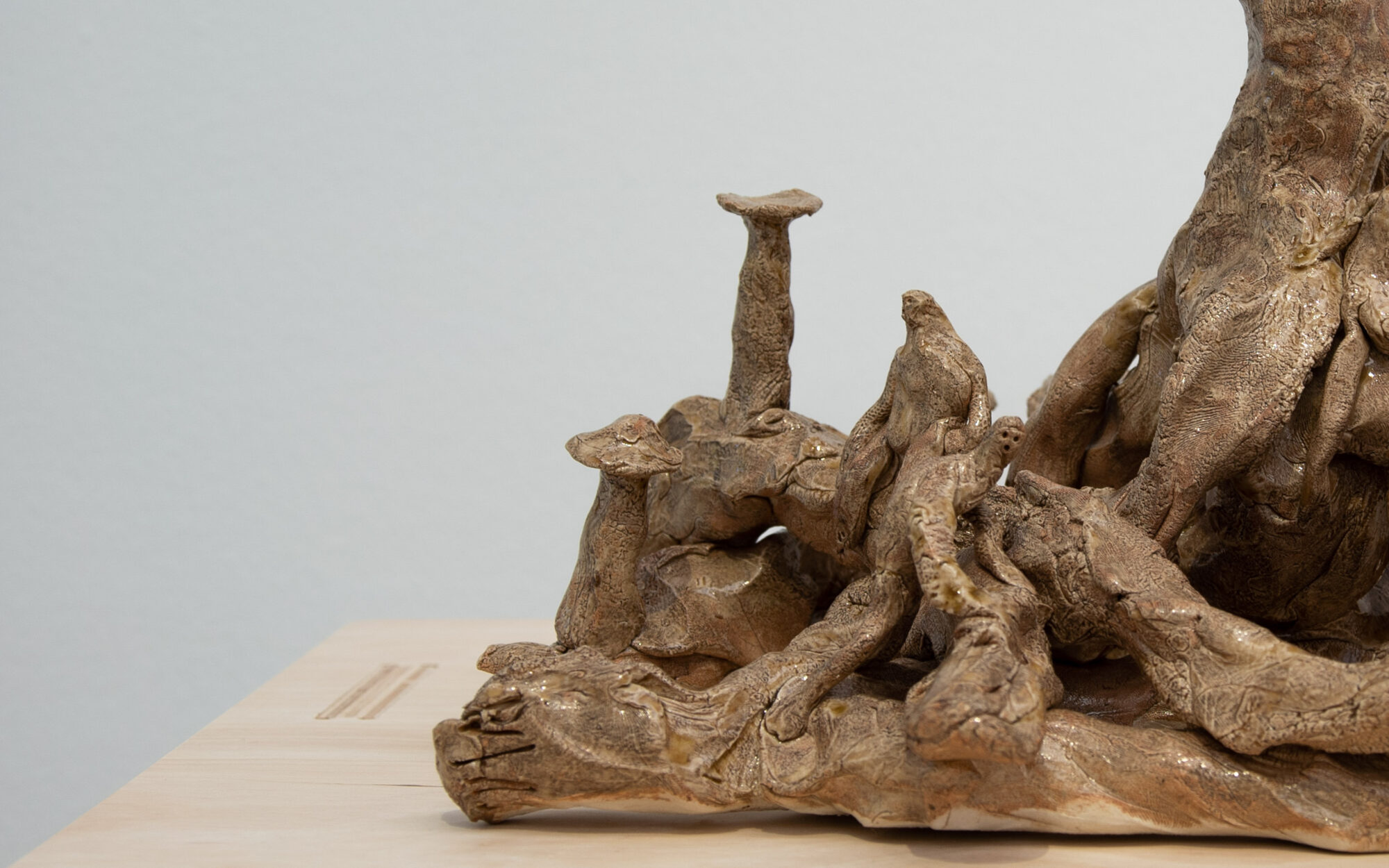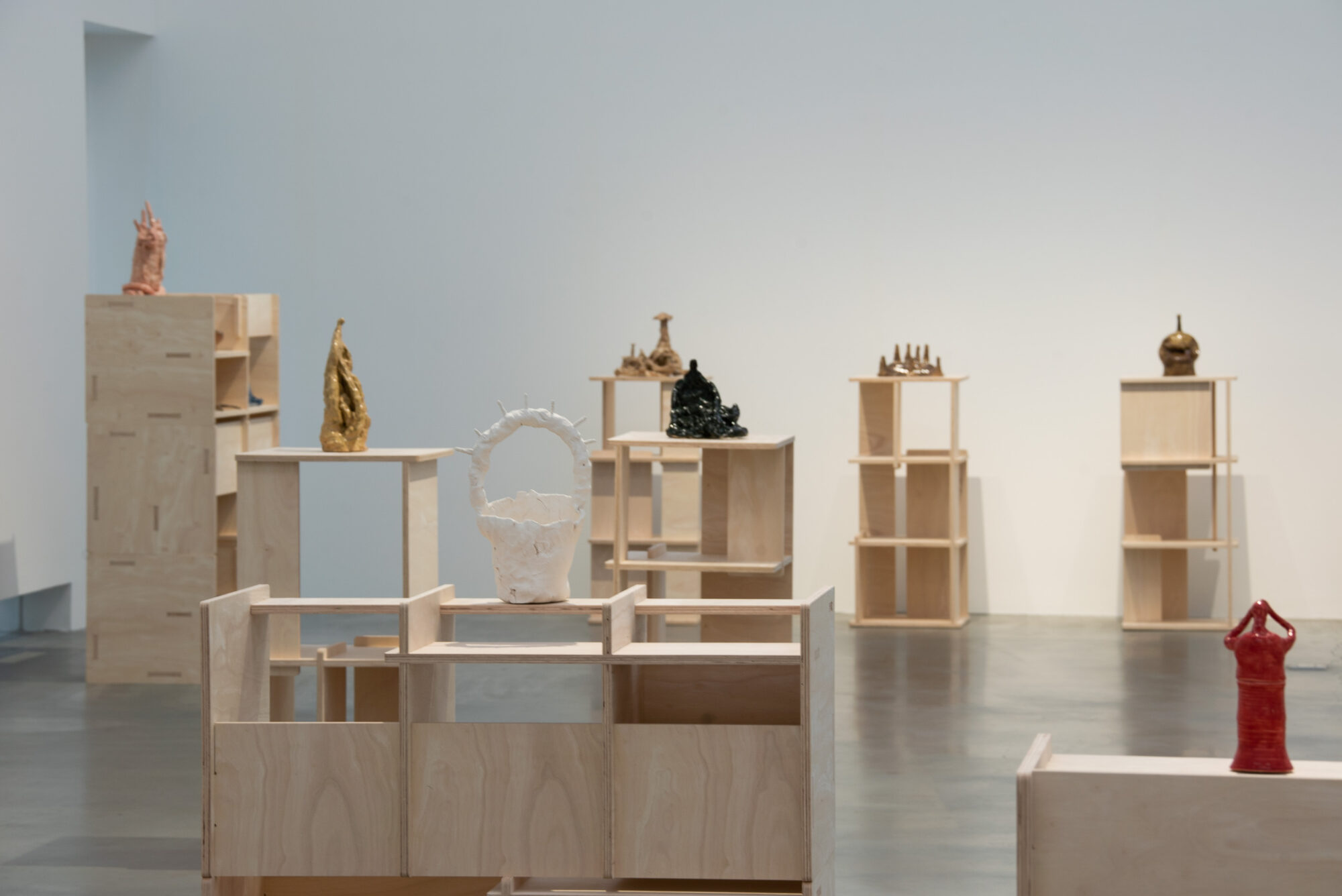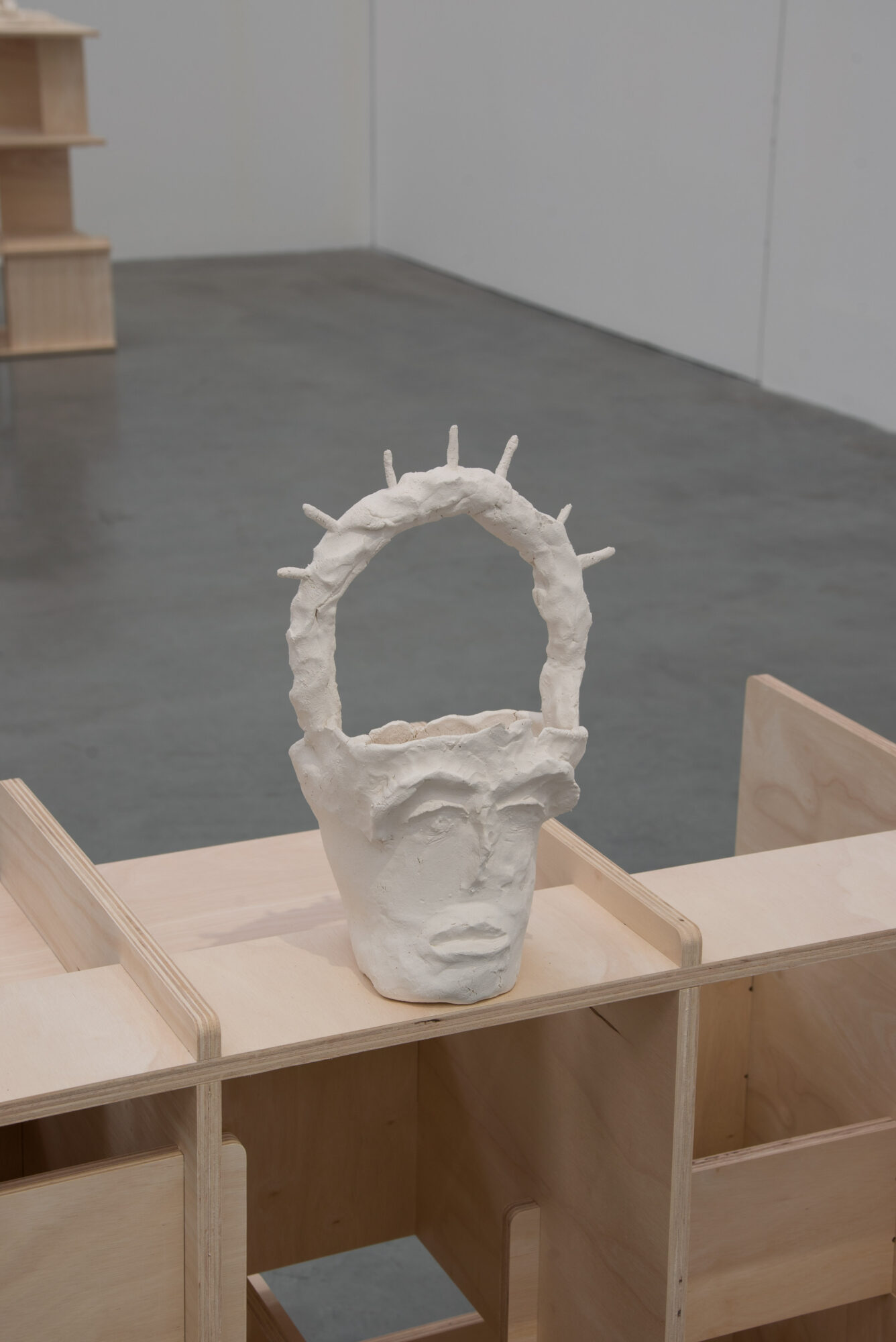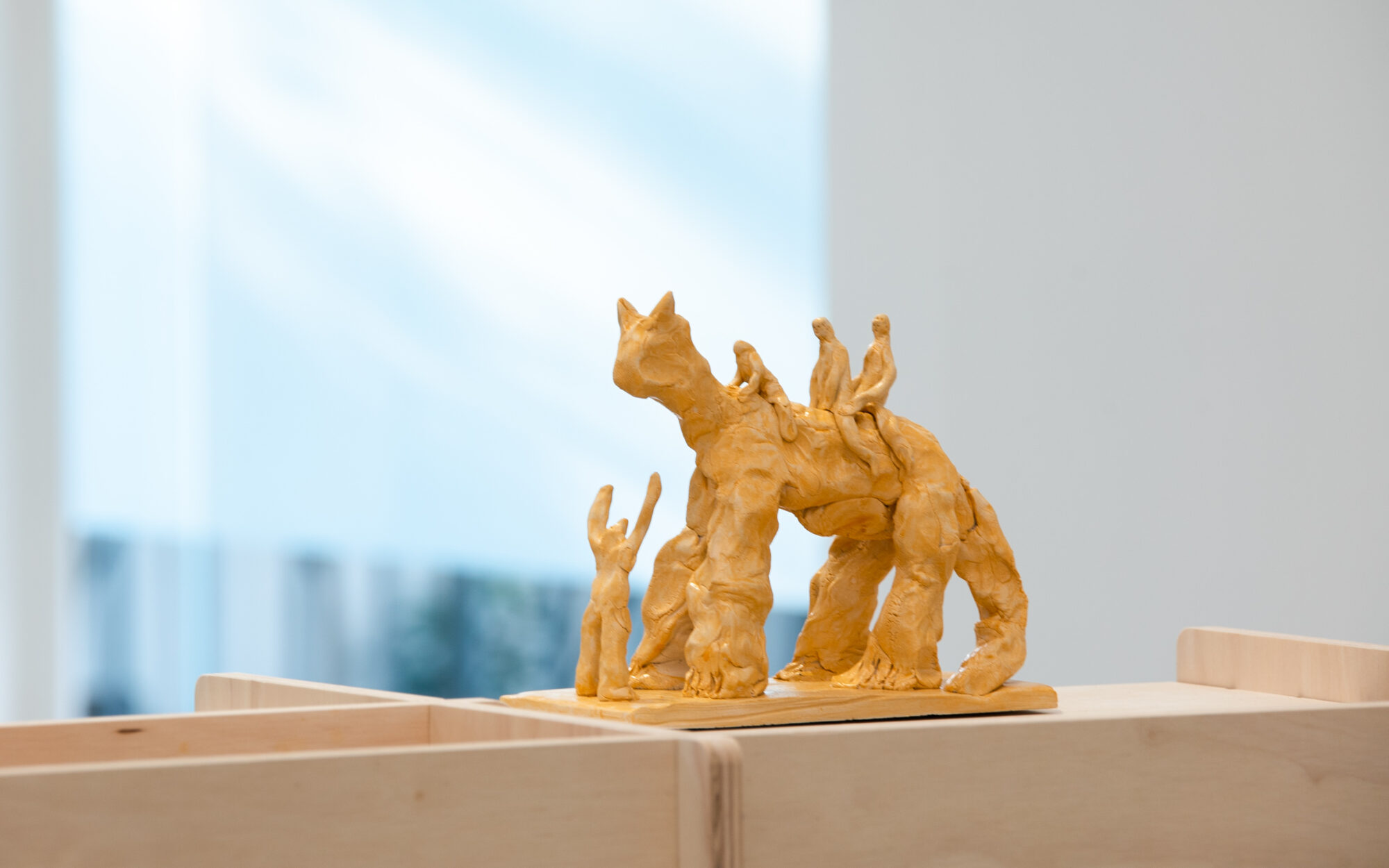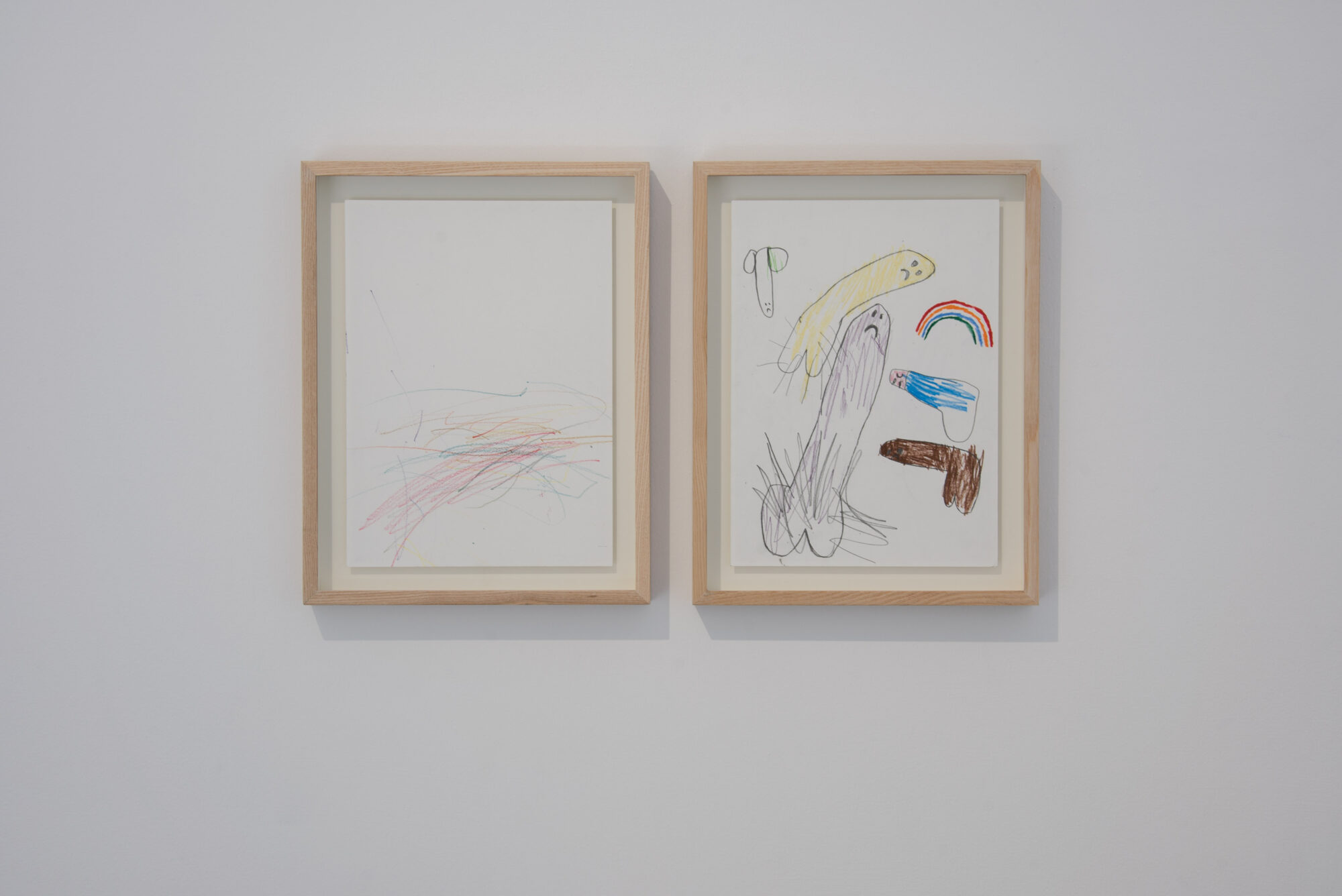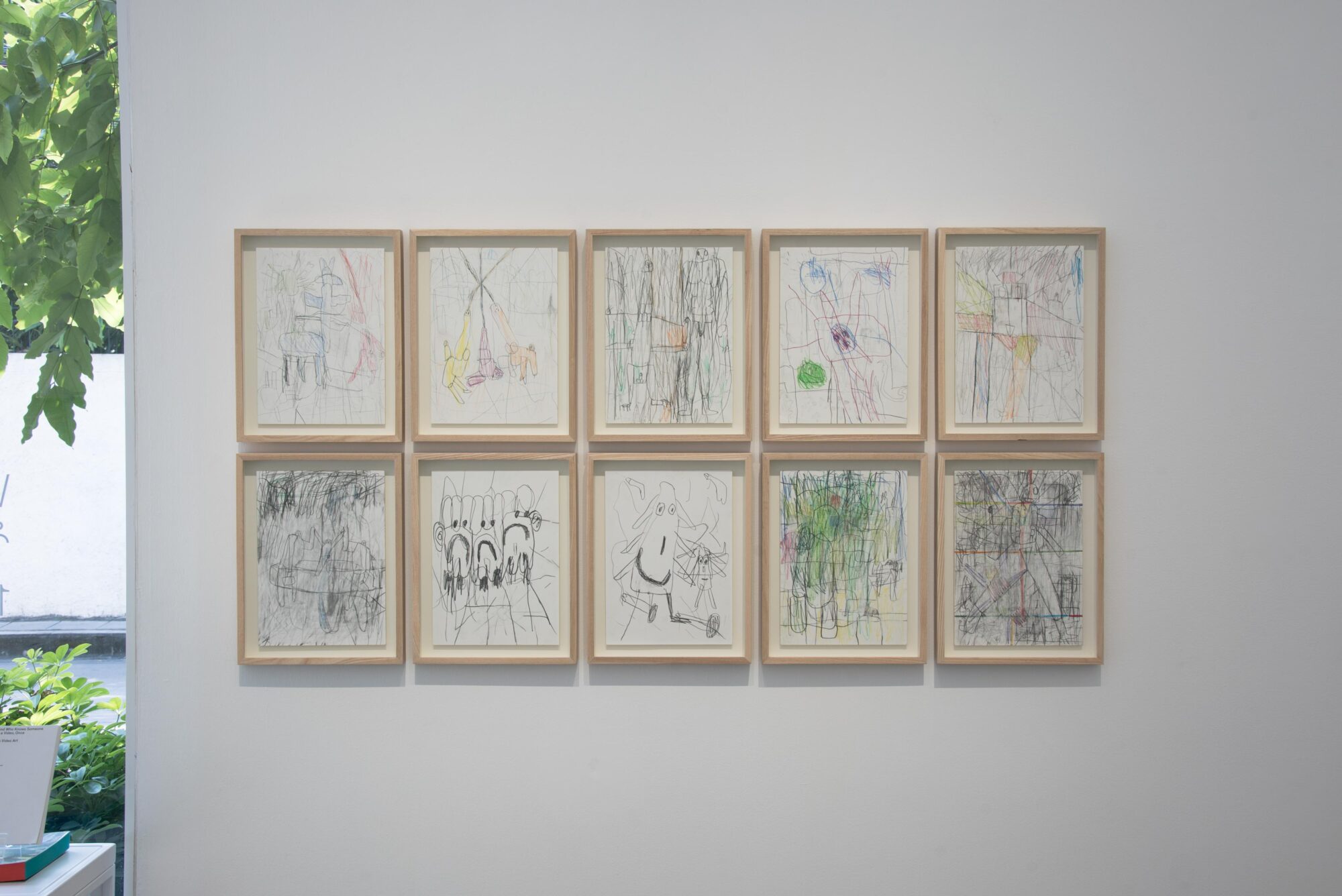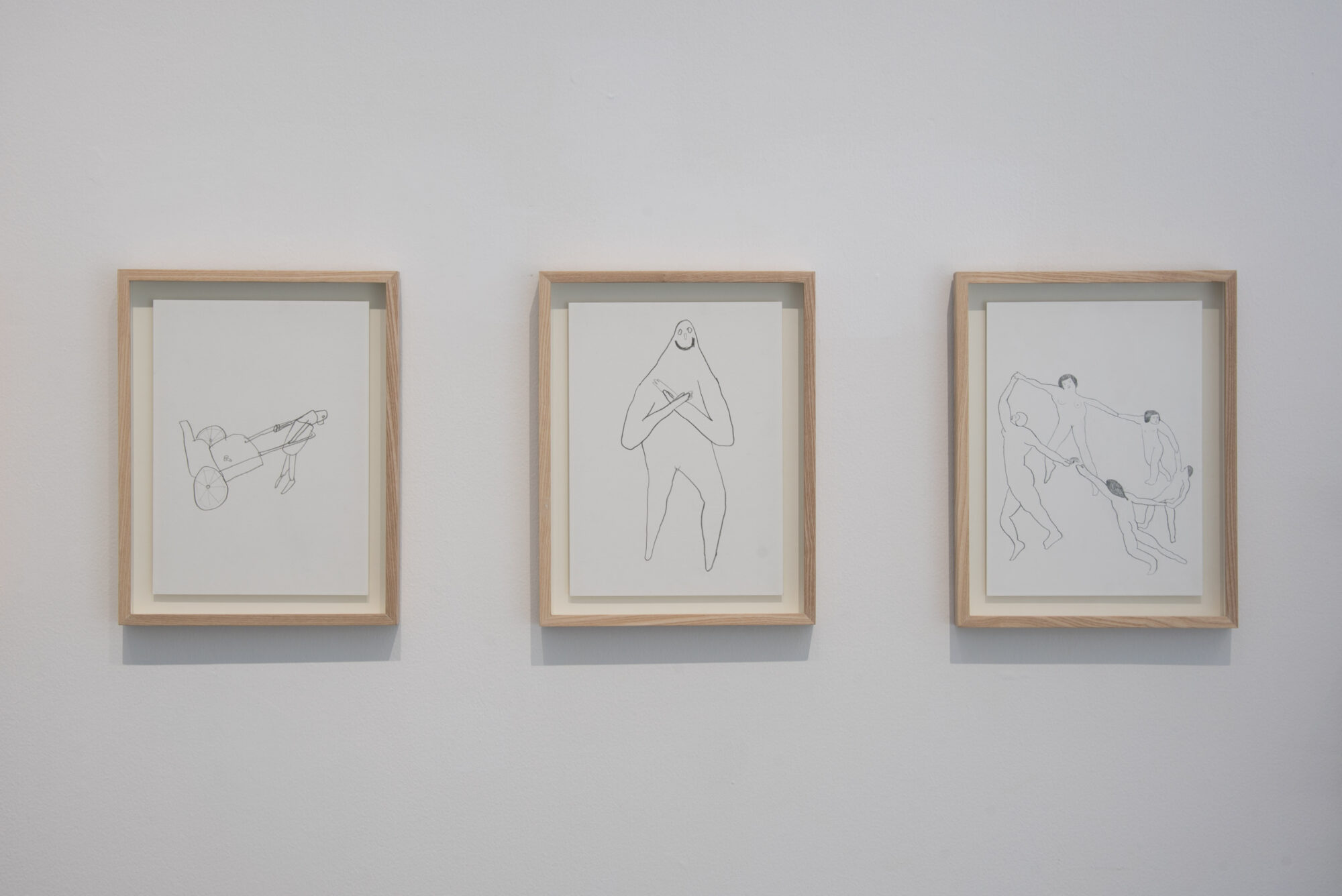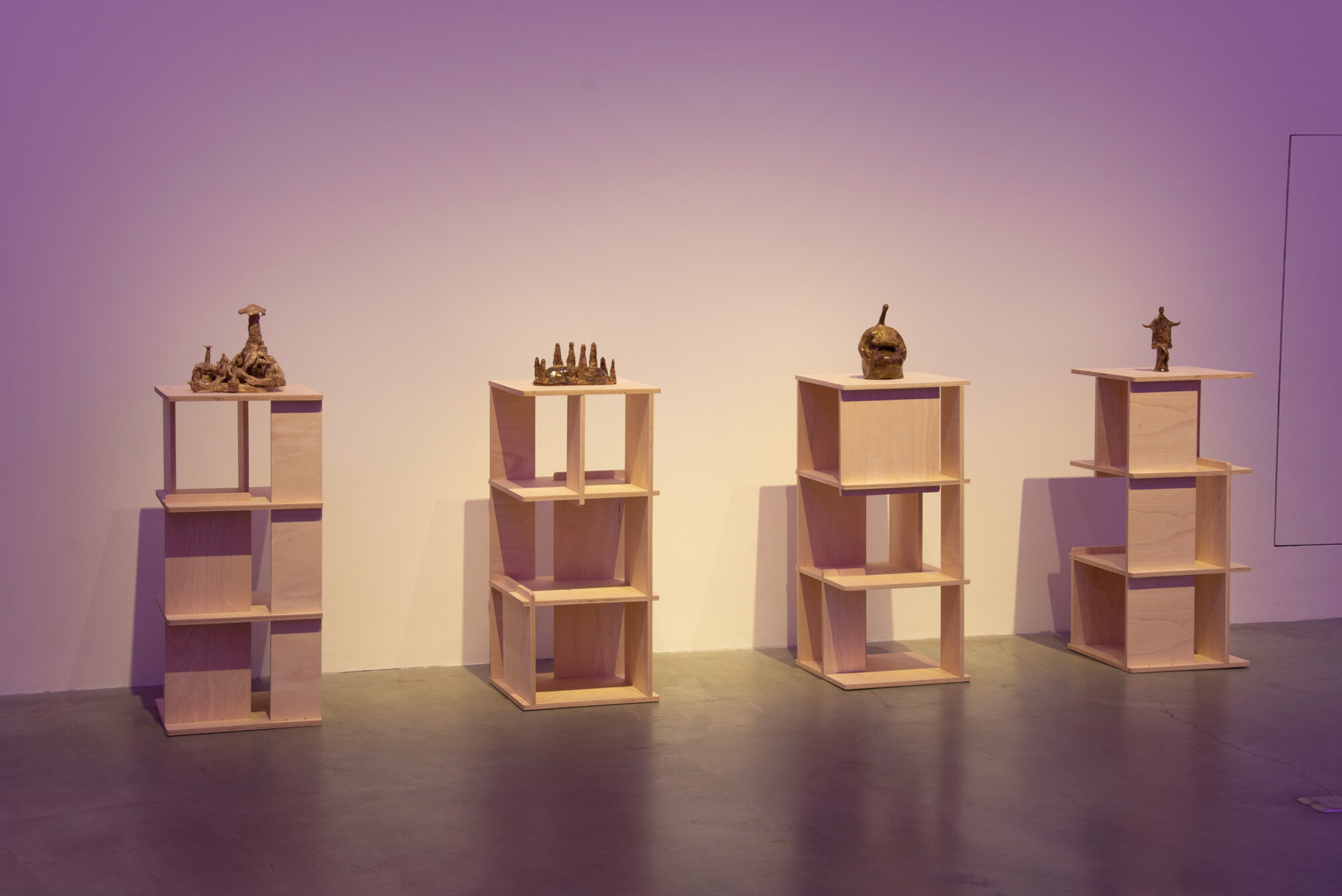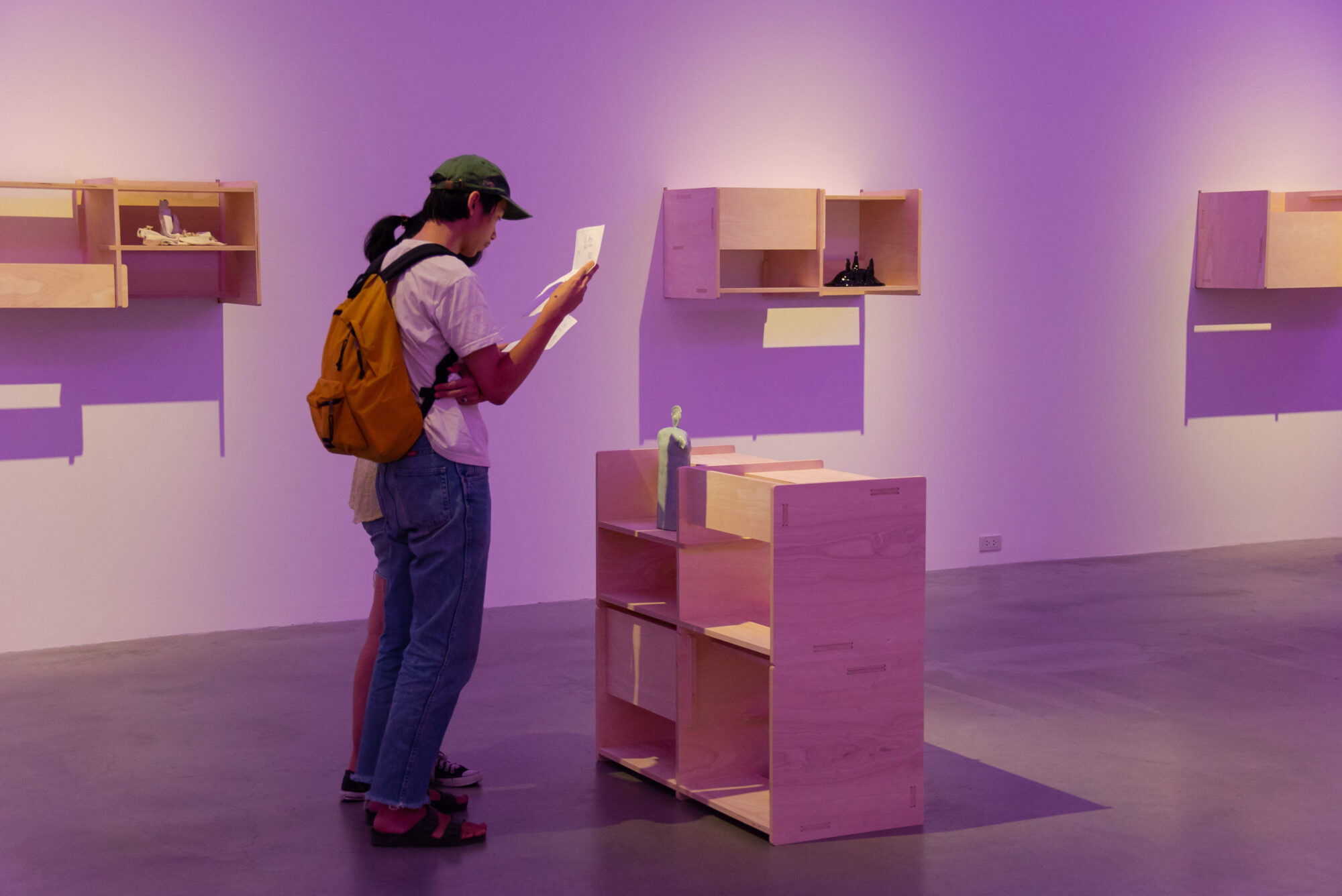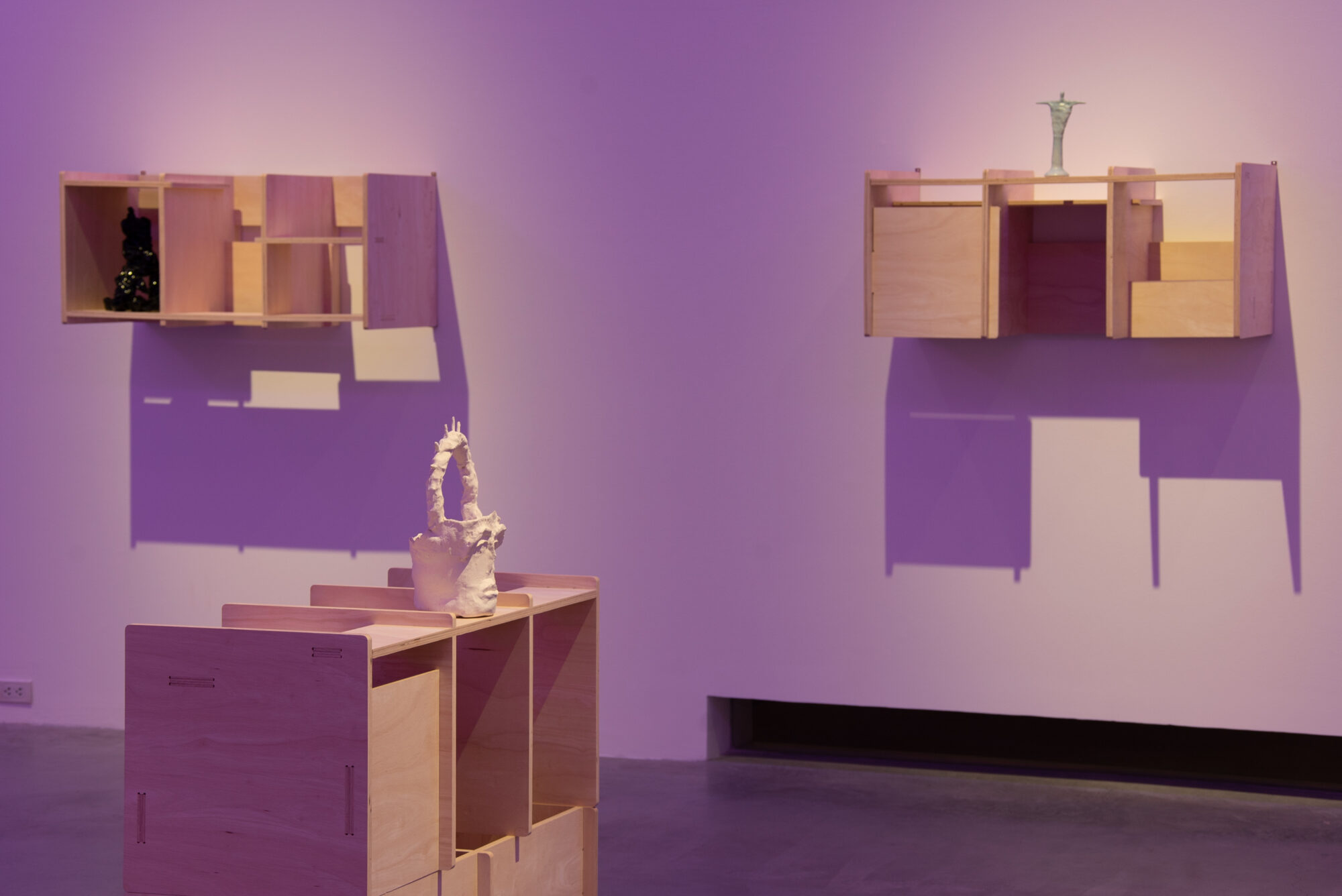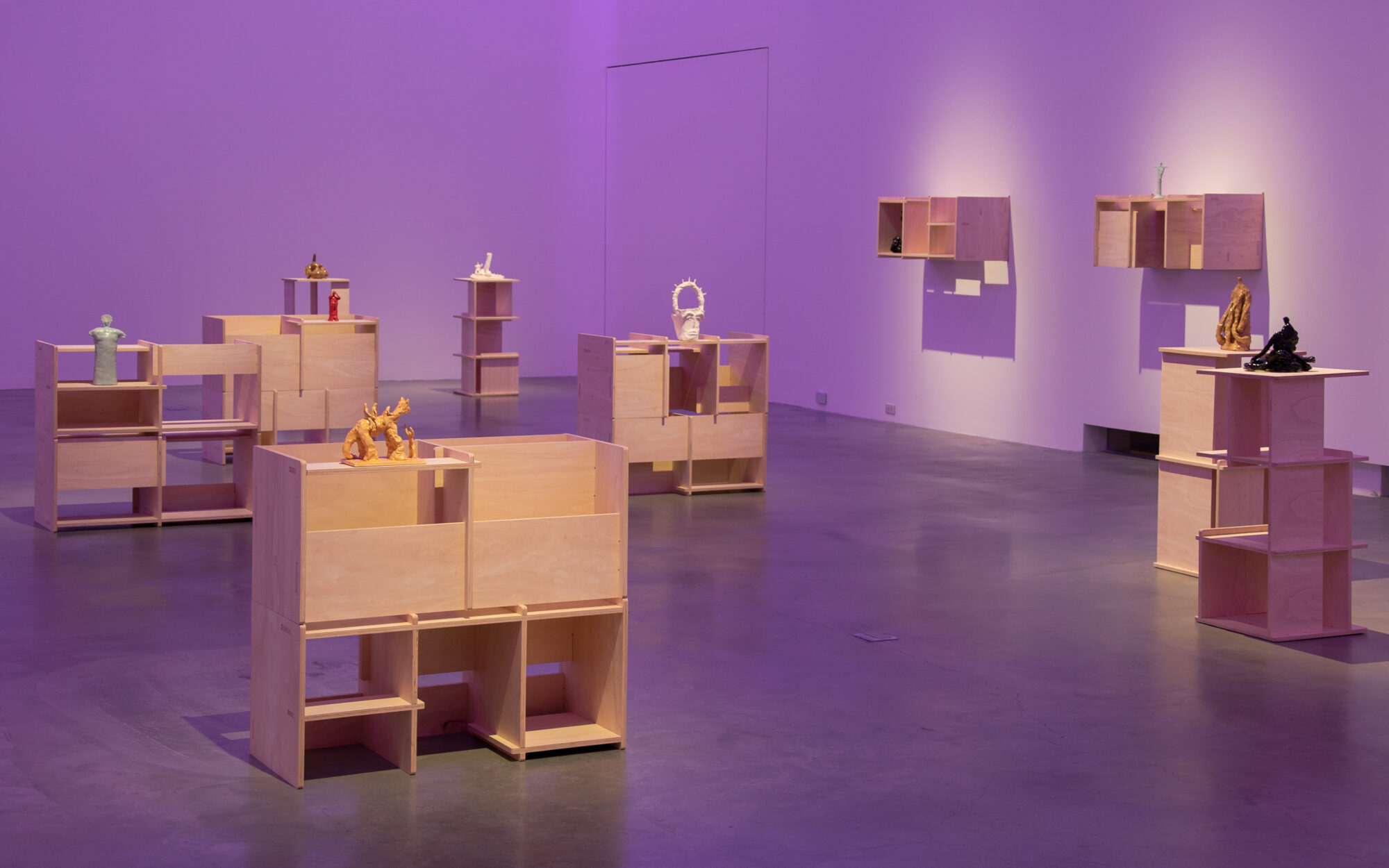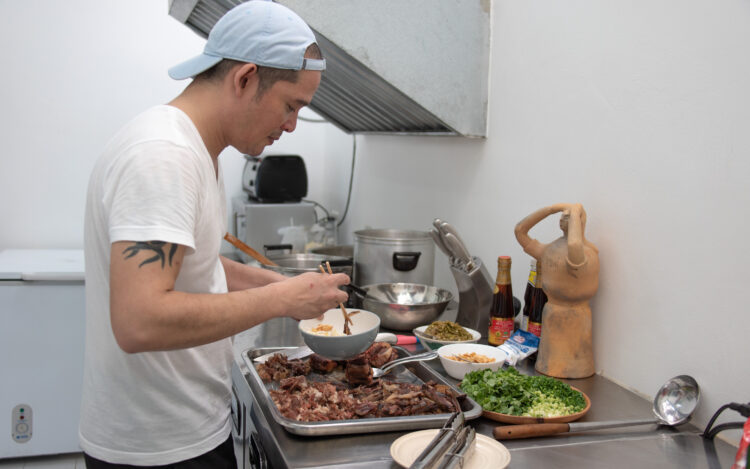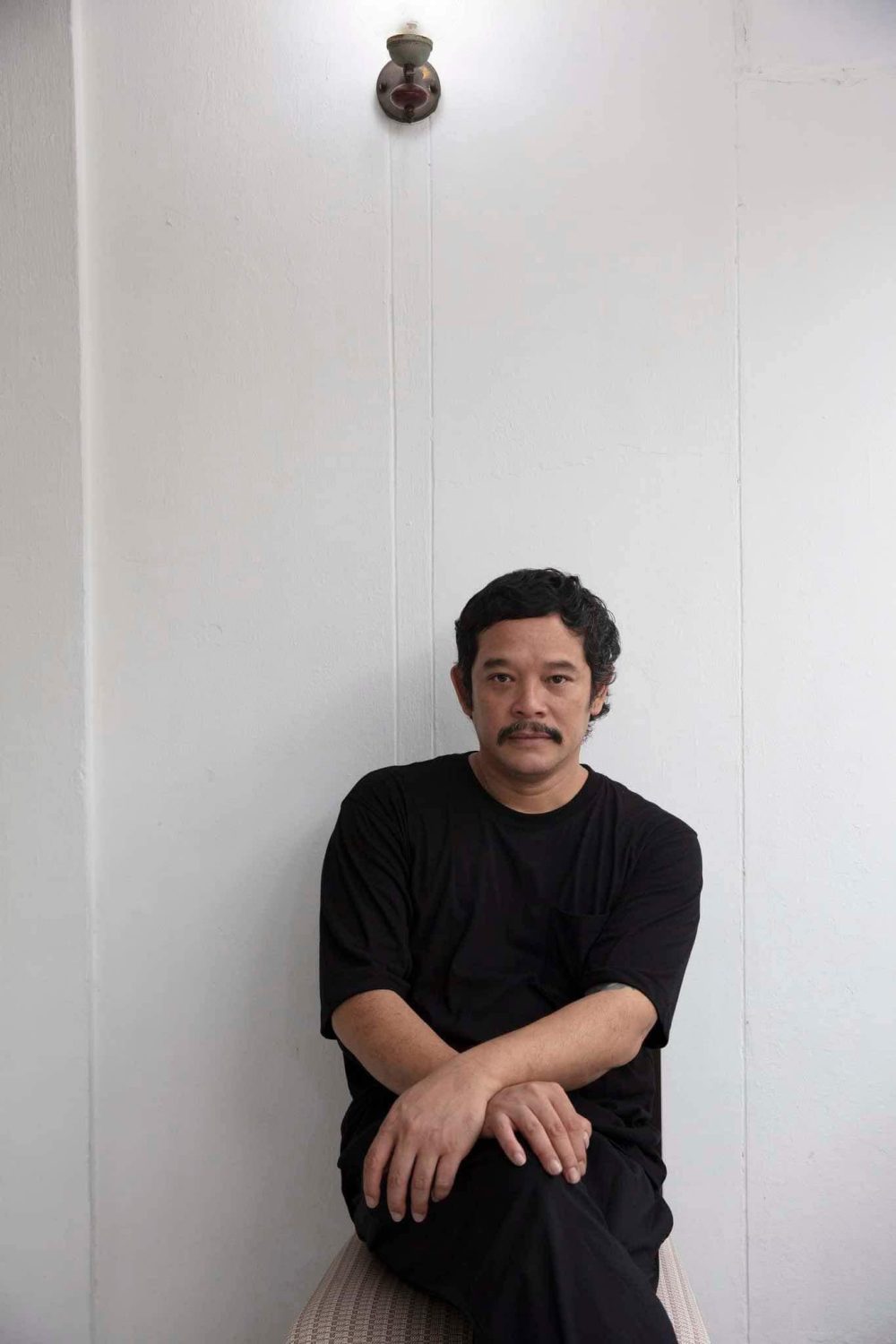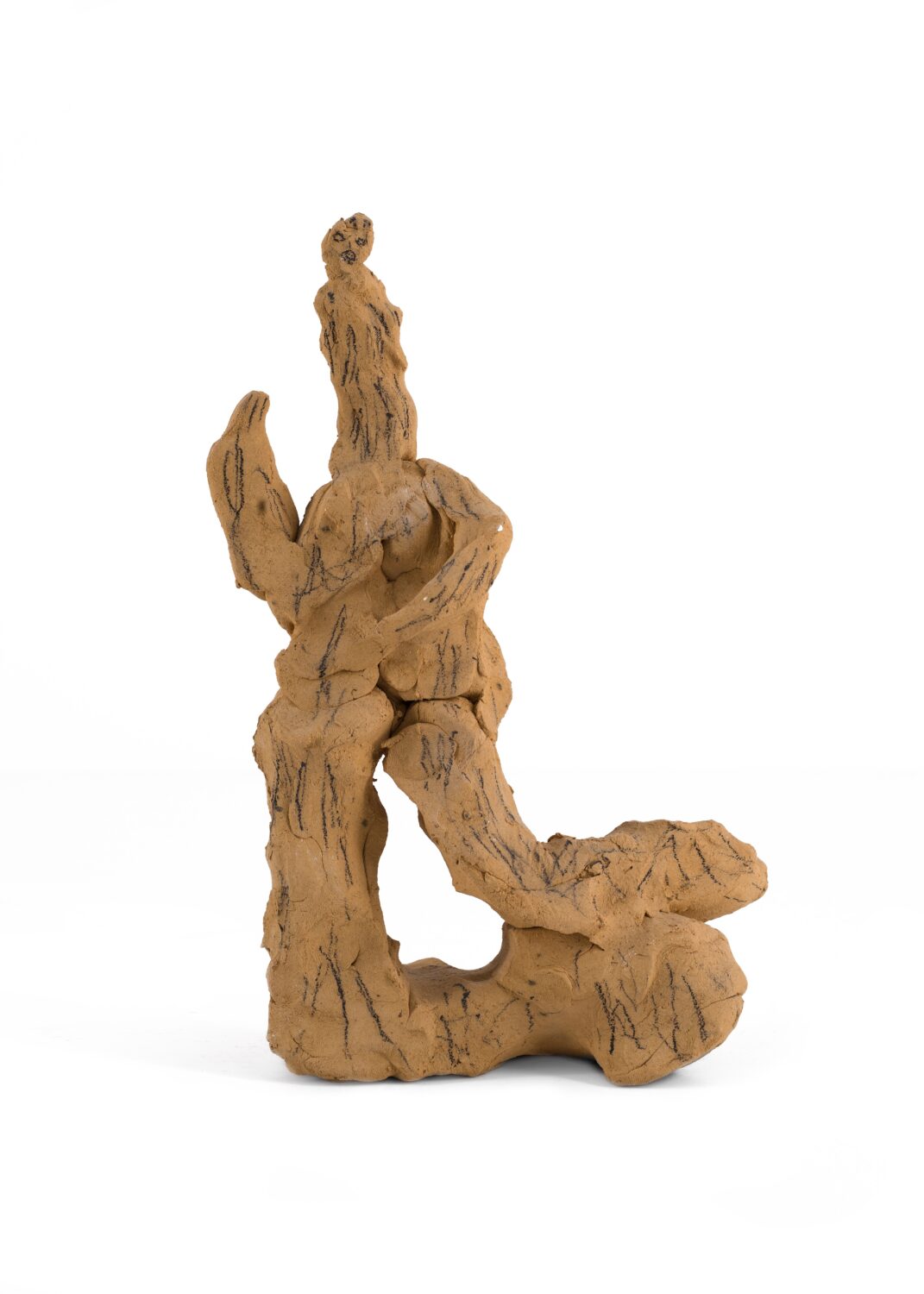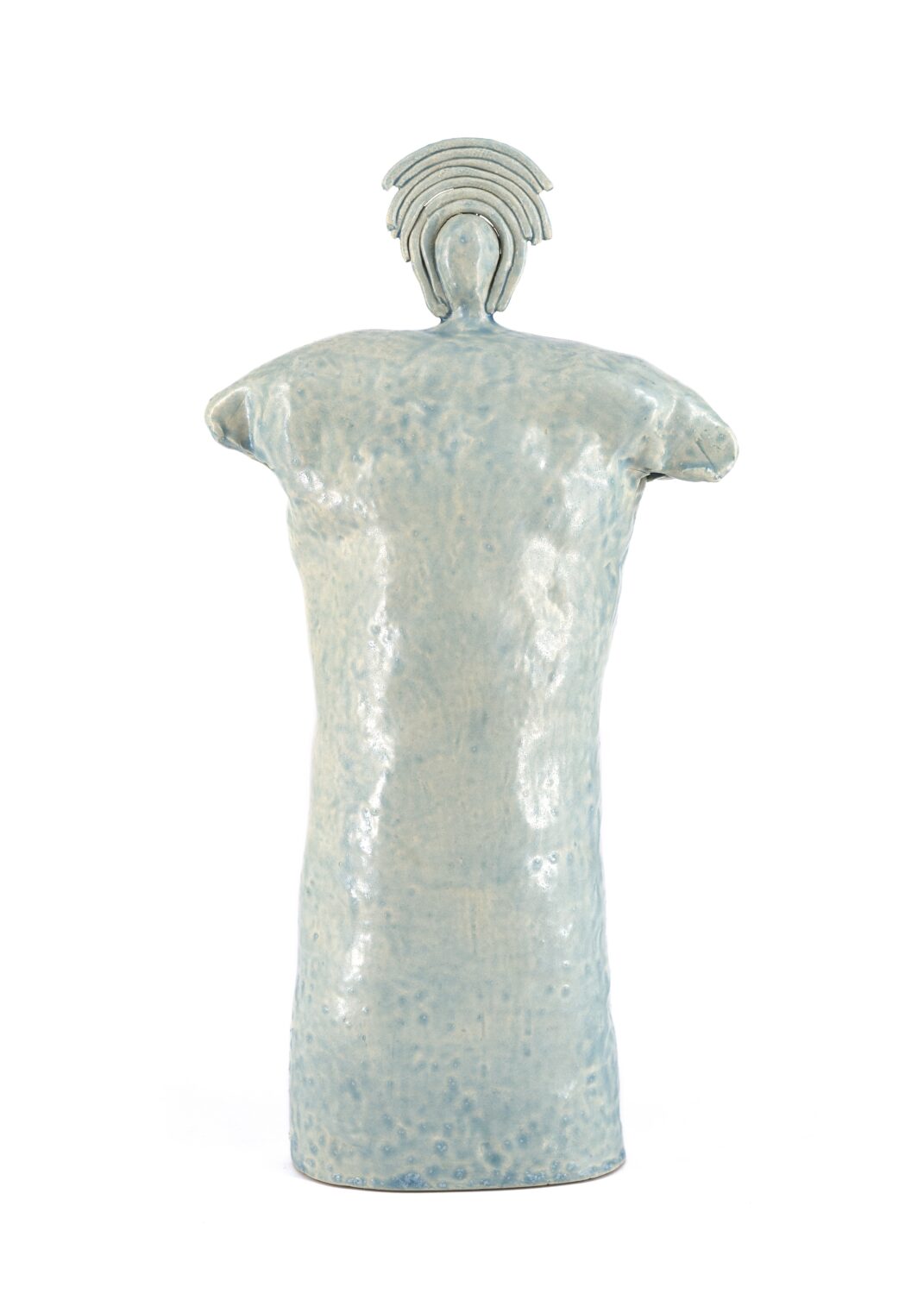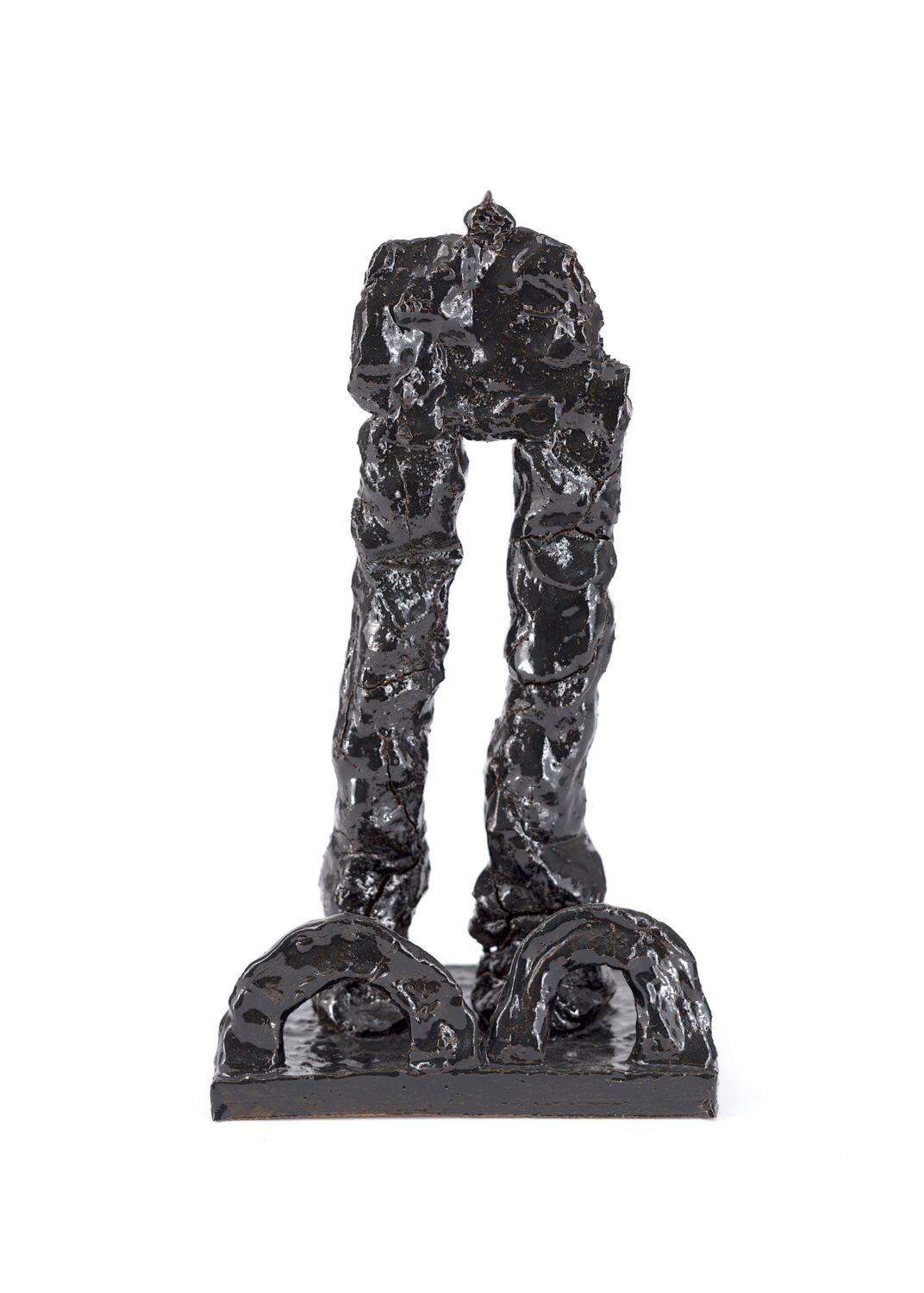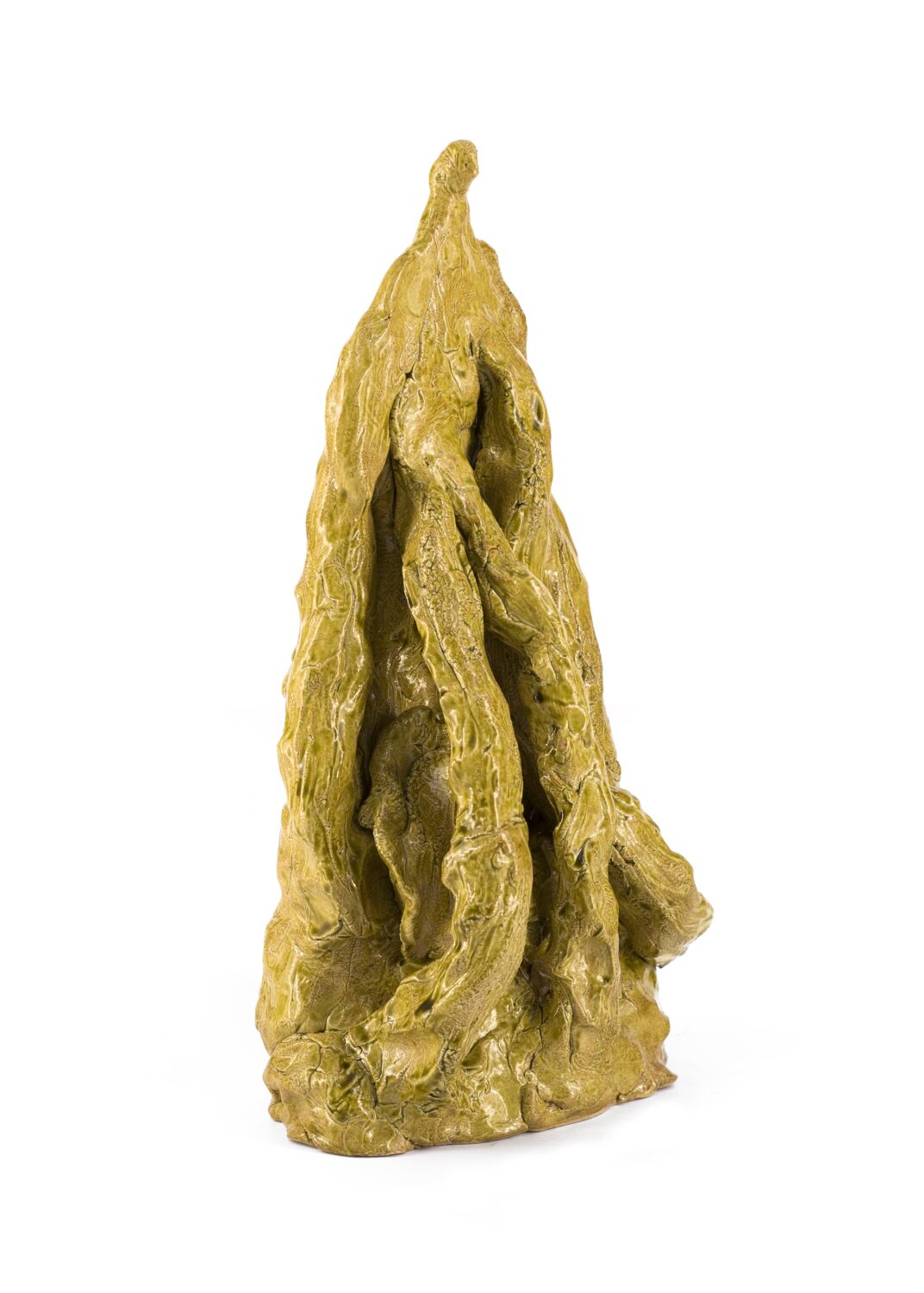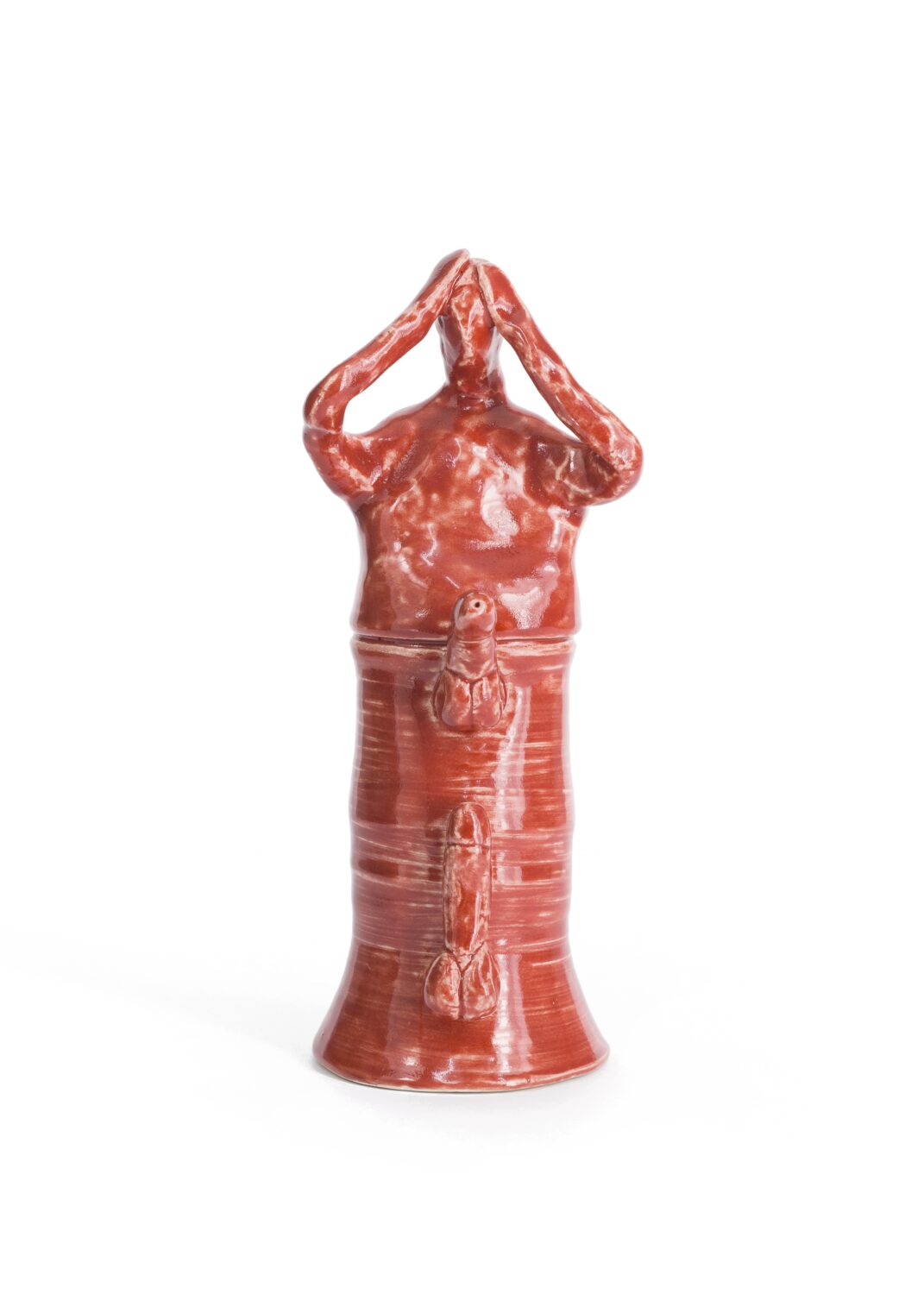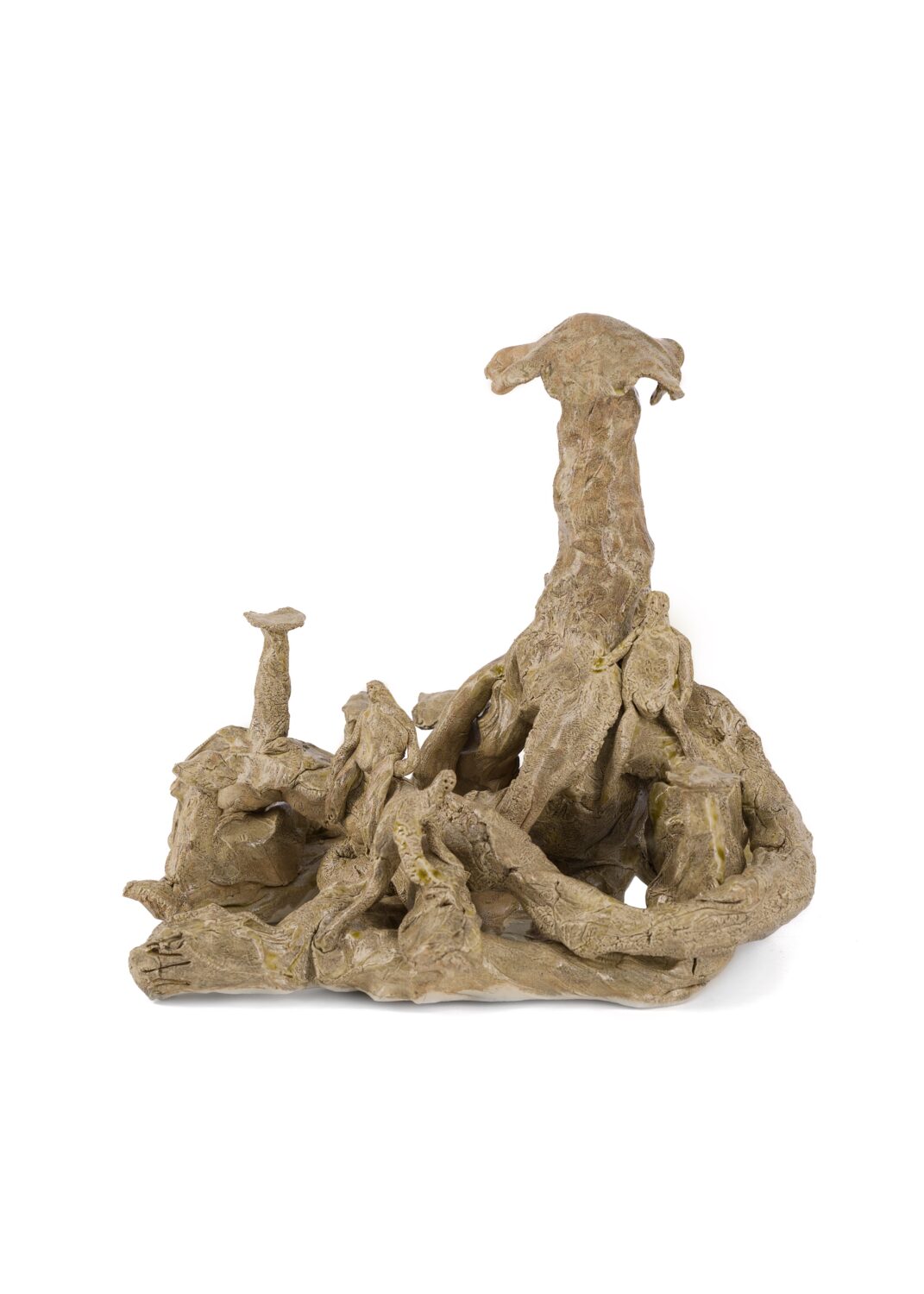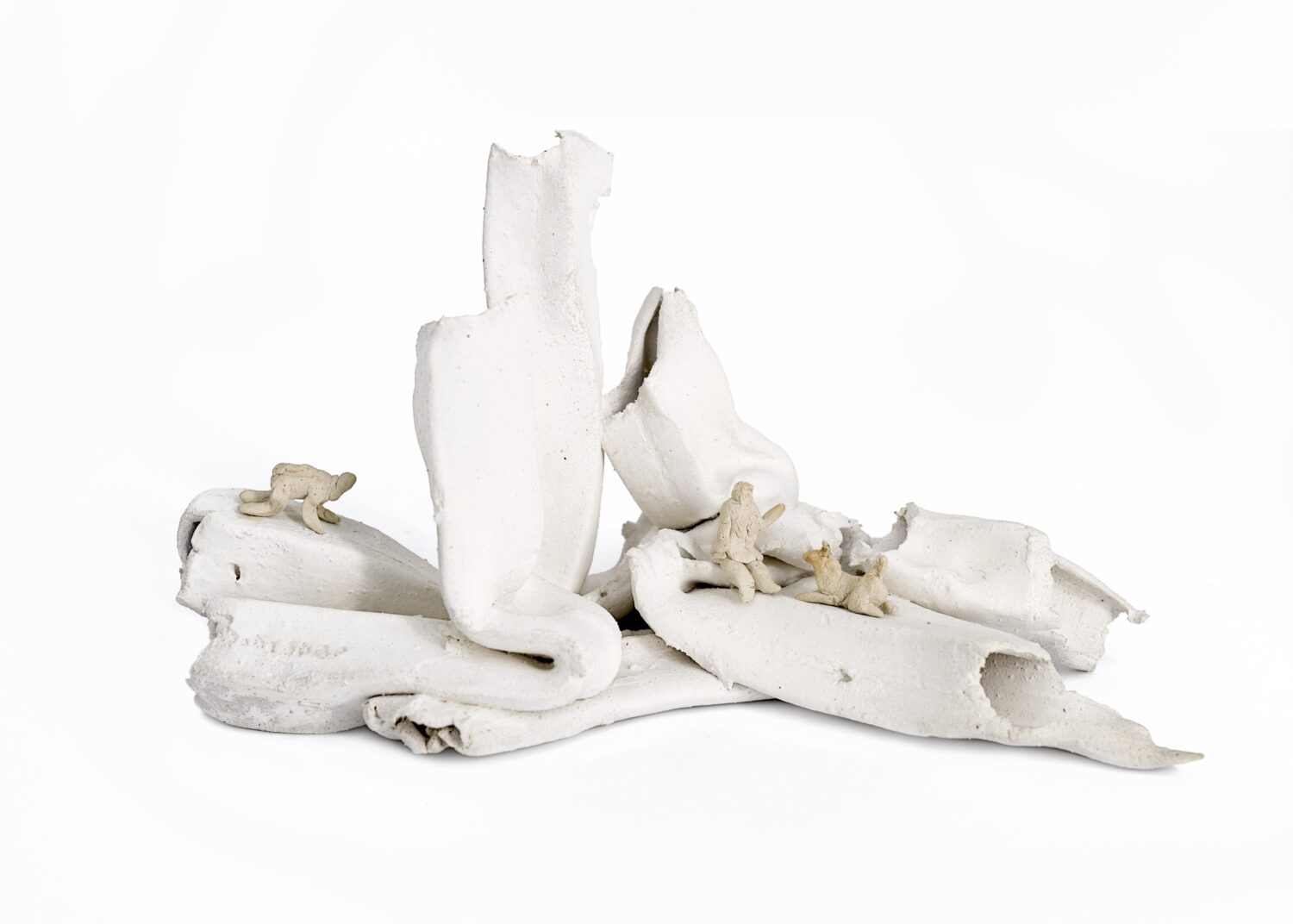Dusadee Huntrakul, We dance outside to reclaim what belongs to the public, 2019
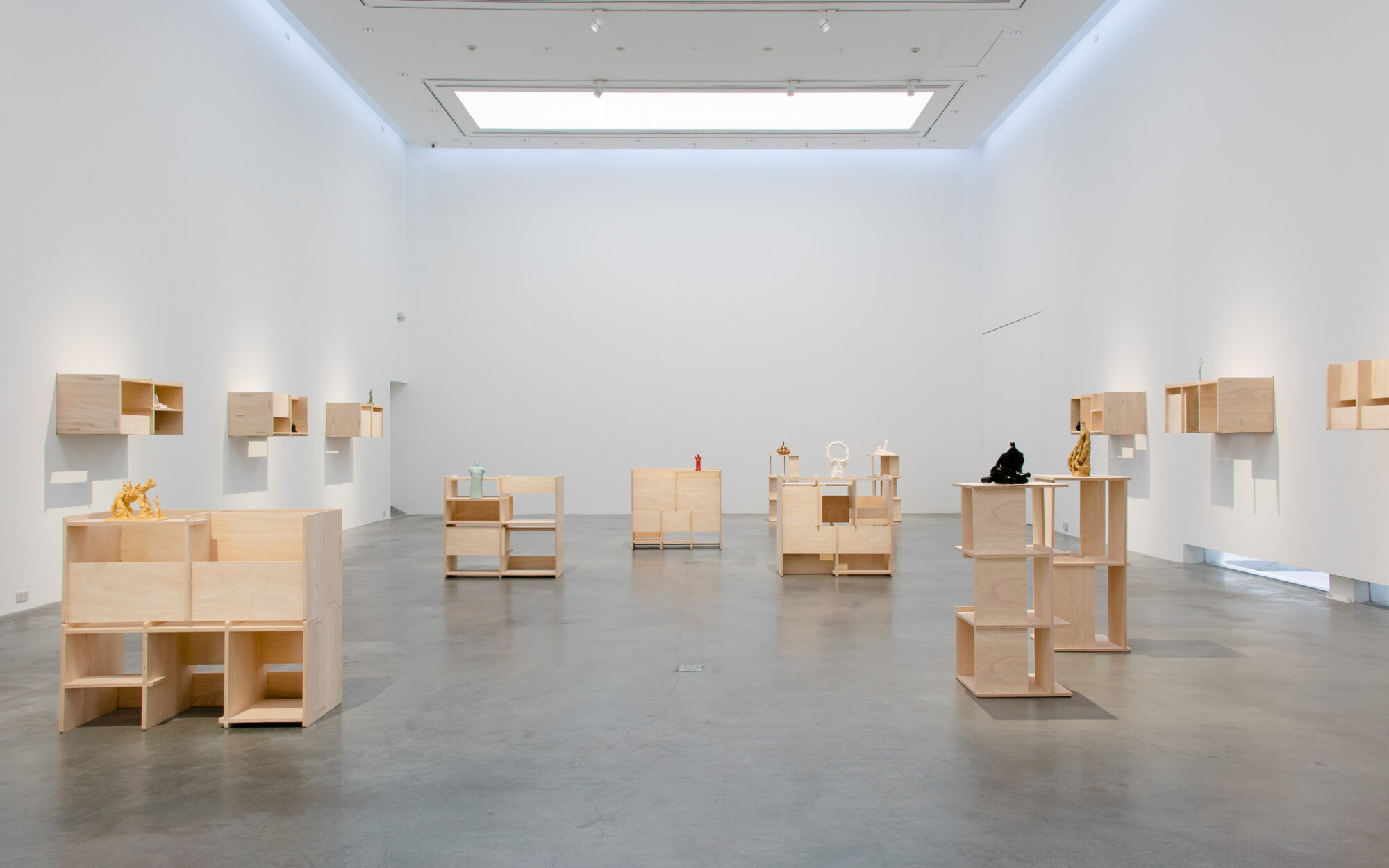
EXHIBITION
DUSADEE HUNTRAKUL
They Talk
28 September–17 November 2019
They Talk by Dusadee Huntrakul, an artist with a deep-rooted imagination and yearning for an interconnected carriageway to souls. Marked his first solo exhibition with the gallery, Huntrakul encompasses everlasting utterances of “they” who have lived through time as ancient as the earth has existed. They Talk penetrates the thickness of stories beyond the linearity of historical time until the gate of unknowns become, again, open.
Since nature gives and takes away life, the artist tries to decipher how nature has navigated and how navigators travel in the deep time and deep space. Through his artistic process, Huntrakul remakes these maps and vehicles for those who have ceased to talk to human (or humans that have lost their ability to hear?). From the discovery of Baan Chiang’s pre-historical bracelets that inspired the artist to scrutinize the endless incorporeality living through disparate times. In Map for the Soul to Return to the Body (2019) for Singapore Biennale 2019 opening later this year, Huntrakul draws the map of those lives taken away, and creates diverse vehicles so they can ride across multi-layered ontologies of time. As if the artist attempts to create an alternative cosmology, in They Talk, navigators find their home through bodies of figurines—mediated bodies of they.
Looking through the practice of ceramic making, his desire has brought him in touch with one of the oldest materials on earth—clay. Since craft-making is inherently ritualistic in which a craft maker ought to integrate his body with materials and their rhythms, Huntrakul has found a way to mend his body into the irreversible past and the unfathomable future through the ritual of ceramic making. In his previous exhibition at 100 Tonson Gallery, There are More Monsoon Songs Elsewhere (2018) is an exemplary poetry of his works which shows the way he approaches the world.
As They Talk breathes into a cyclical time, a figurine titled The past is now and the future again will pass just like yesterday, so anywhere you want to go you can go through me (2019) envisions the non-linearity of time. Power of imagination is visualized in Hanging out with mother talking about what type of imagining would not fail (2019), whilst the mother is a recurrent figure in this exhibition. In Listening in on a conversation between a woman and a wolf and their rivers (2019), bodies are horizonless perspectives which humans and nonhumans intertwined.
In collaboration with THINKK Studio, a Bangkok-based design studio, they create the installation made of the body of ceramic sculpture from the artist and of plywood of plinth from the design studio, of the relationship between humans and machines. The configuration is well represented in Basic education is biodiversity in urban planning (2019), it reaffirms that the dream of cosmic-making is very contemporary. In other words, it is a very timeless imagination. Supported by the fable titled Grandma, I Want a Penis, they talk to us about how fertility is being born between death and life.
SELECTED WORKS
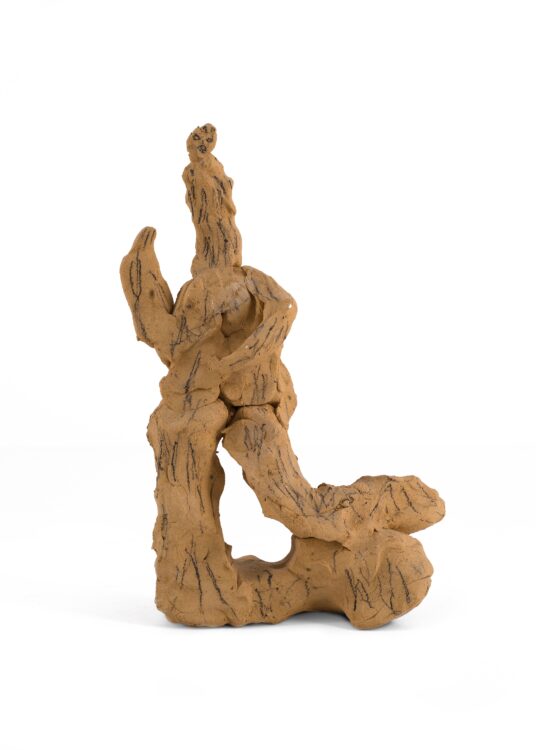
Dusadee Huntrakul, Possible monument for Southeast Asia Clean Air, 2019
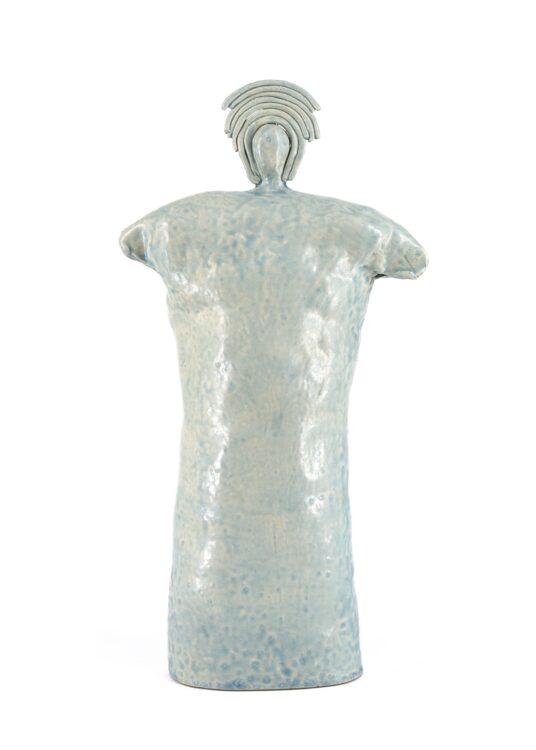
Dusadee Huntrakul, Don't leave your childhood and its sorrow as two rainbows were left into the night with an old man's ability to see, 2019
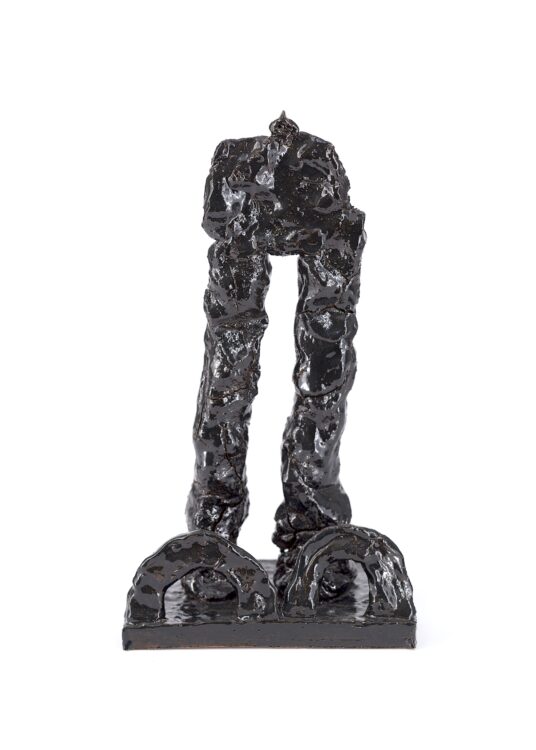
Dusadee Huntrakul, Grandma Intestine, 2019
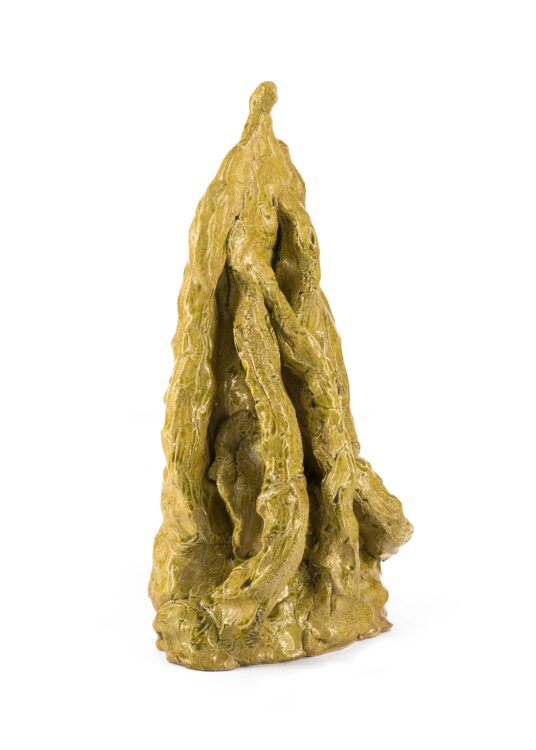
Dusadee Huntrakul, The key to regenerative energy, 2019
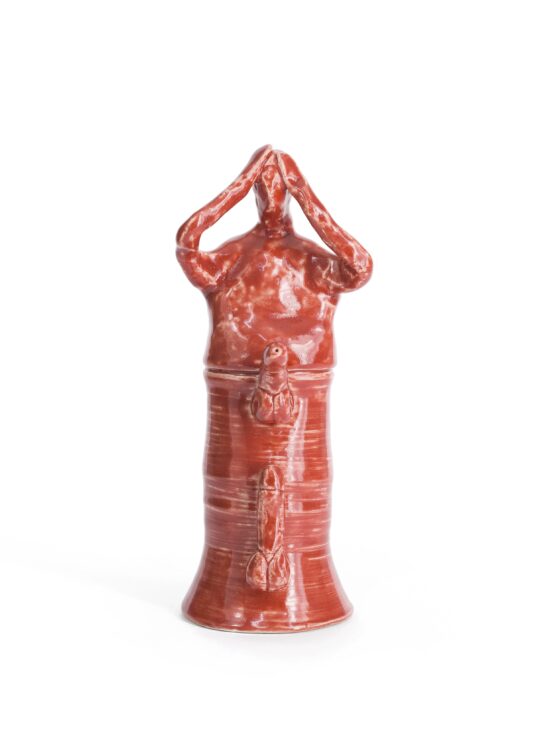
Dusadee Huntrakul, Basic education is biochemistry and how it relates to live, 2019
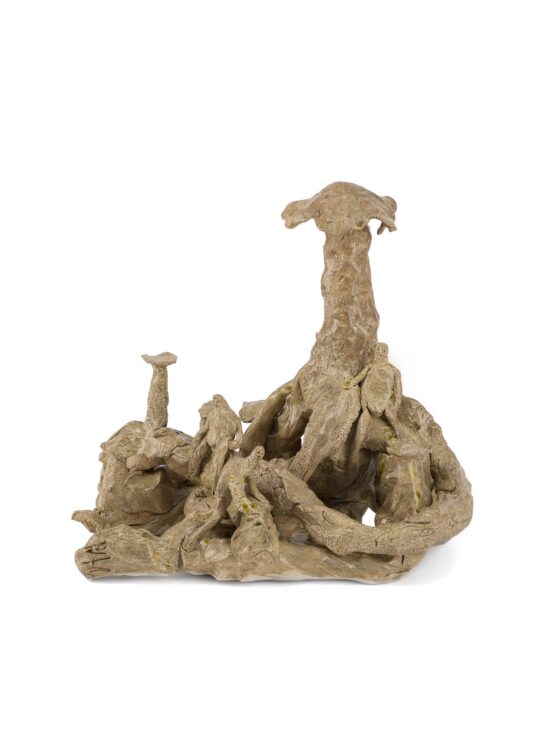
Dusadee Huntrakul, Listening in on a conversation between a woman and a wolf and their rivers, 2019
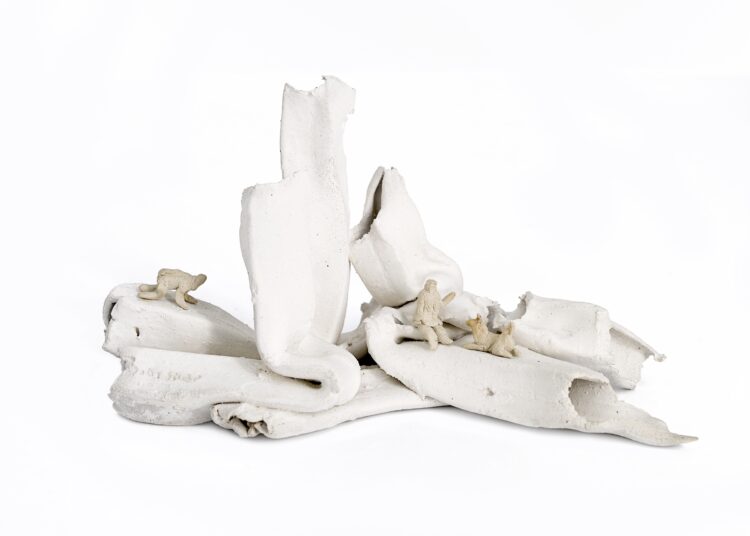
ARTIST
DUSADEE HUNTRAKUL
b.1978. Lives in Bangkok, Thailand
Dusadee Huntrakul is a multi-disciplinary artist working across mediums of sculpture, ceramic, drawing, painting, and text. Seeking human connections that extend across time, his works span the topics of mortality, archaeology, anthropology, and urban ecological observation. Ever since seeing his late brother bring home funky fired ceramic pots that he made at a community college’s pottery class in the US in 1998, something profound moved within him. He started working with clay almost twenty years ago at his uncle’s ceramic studio in Bangkok, and remains to this day, committed to using fired clay, language, and other materials to compose spaces that are familiar yet unknown.


